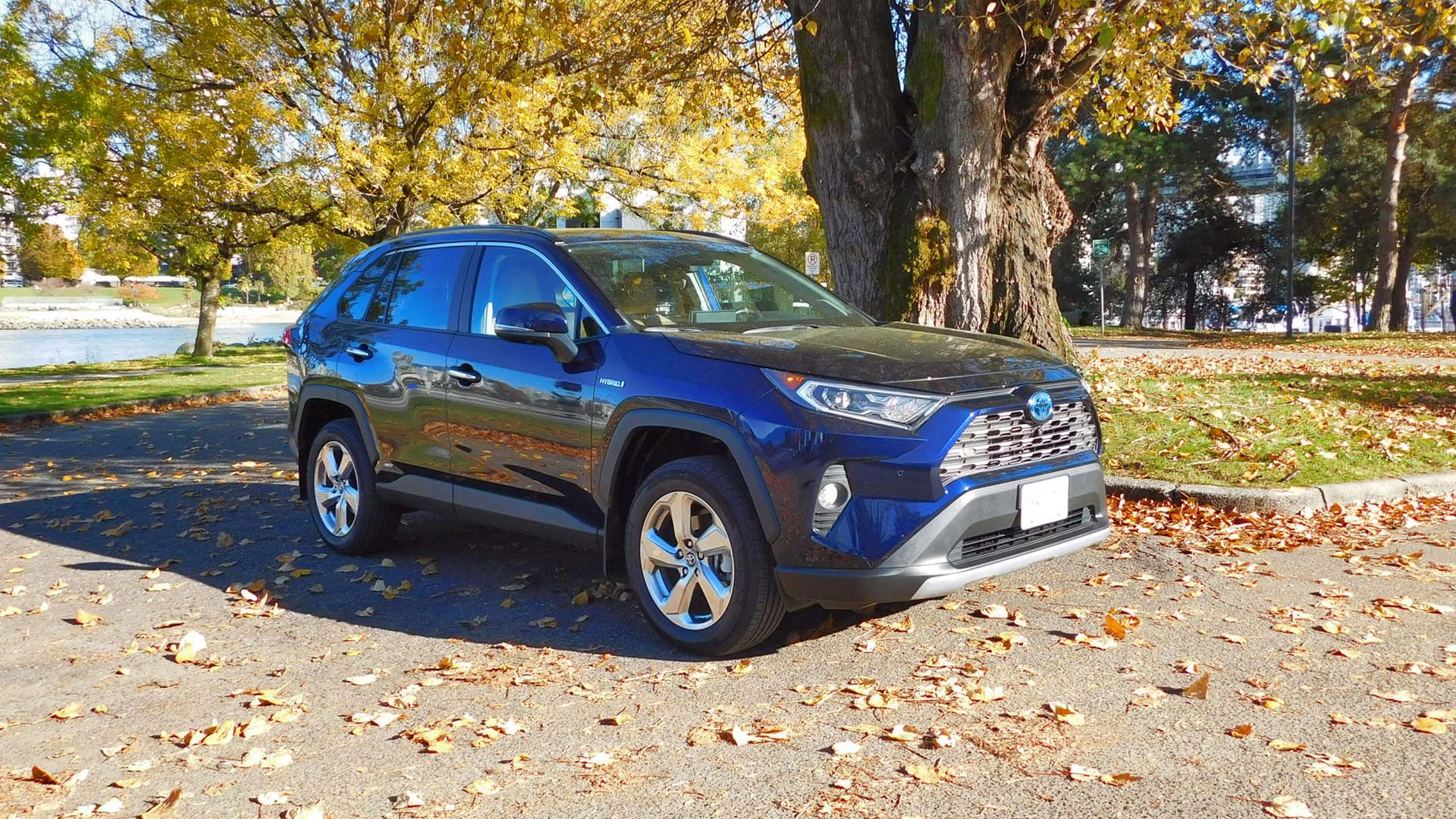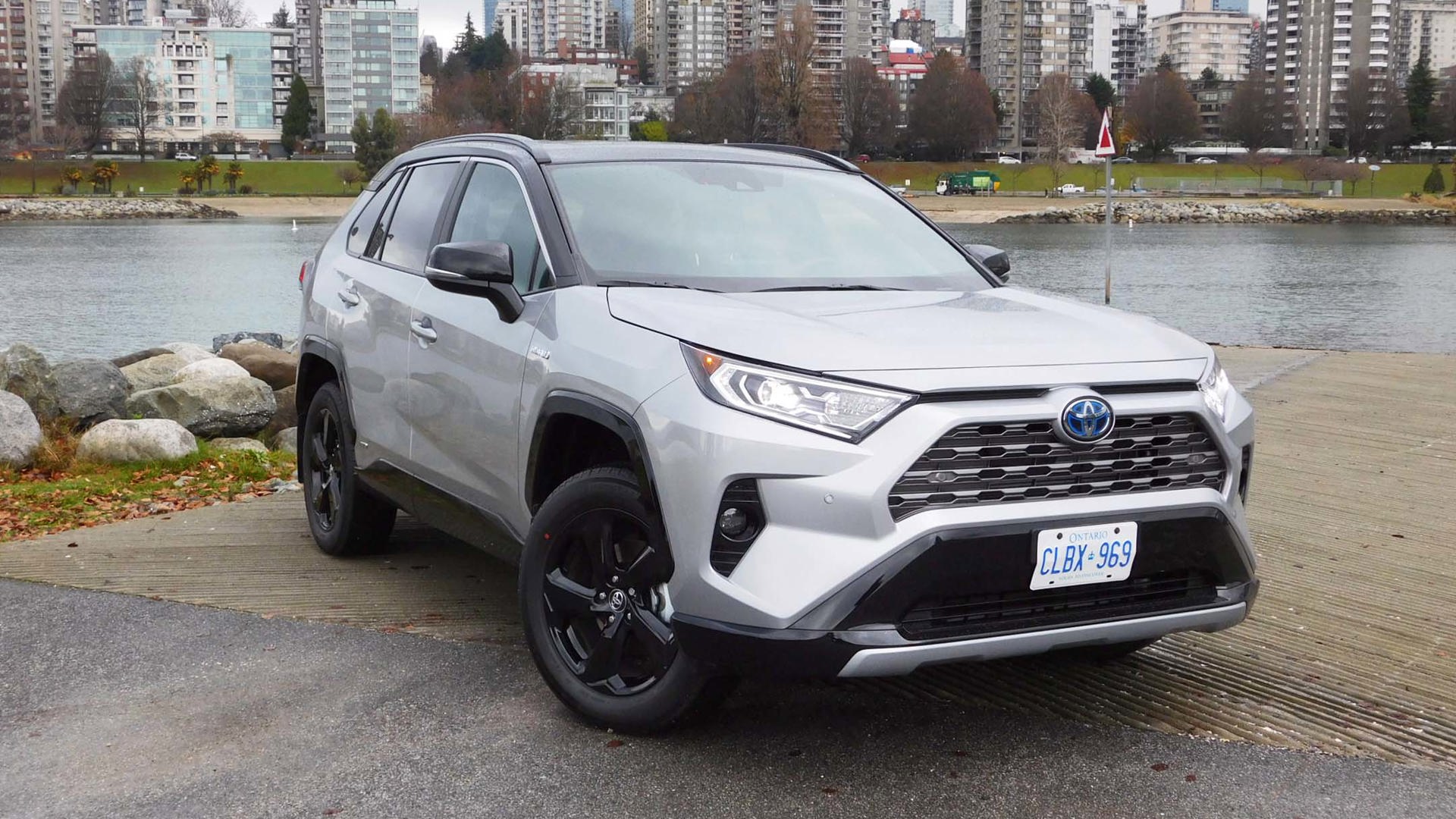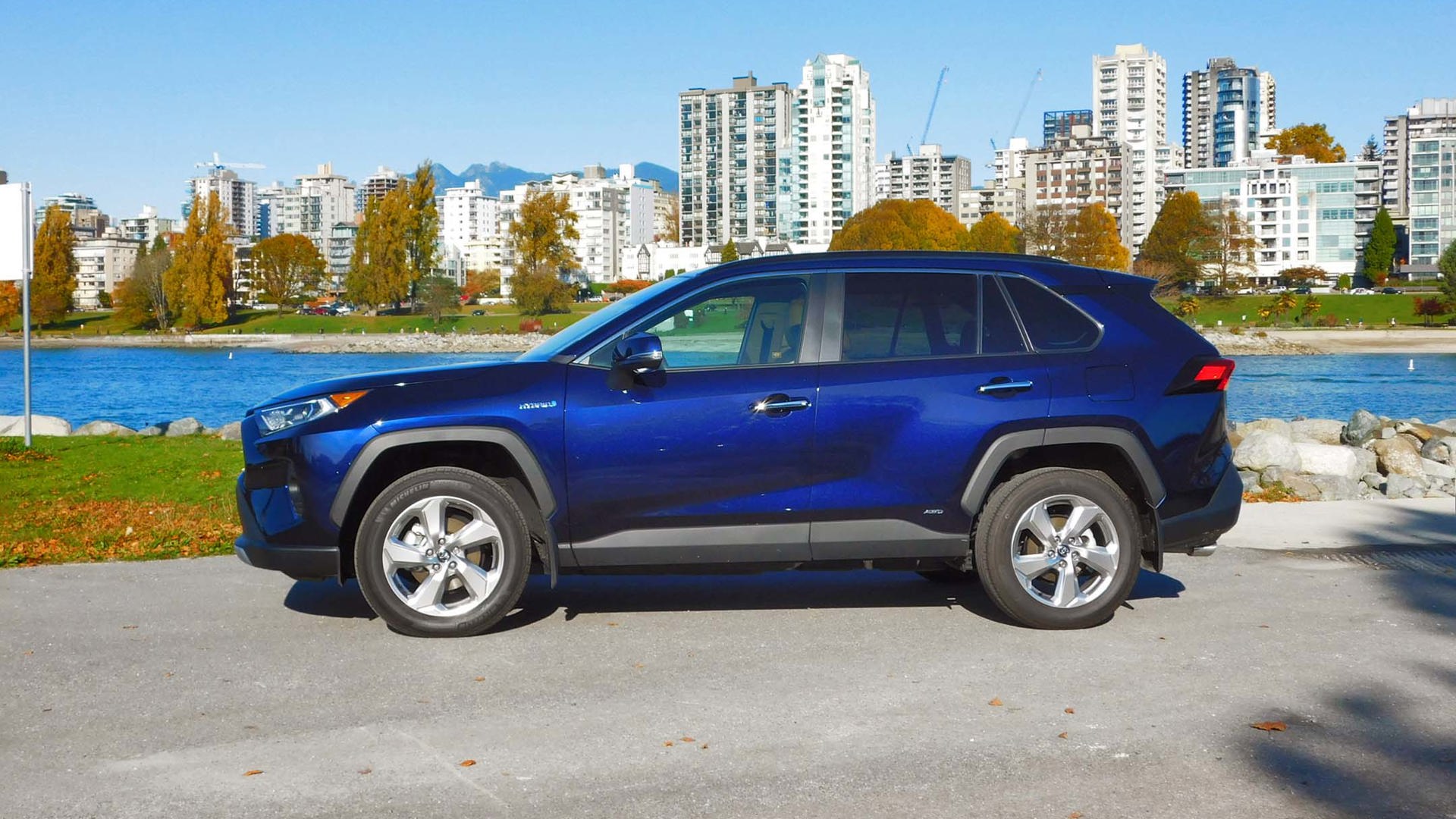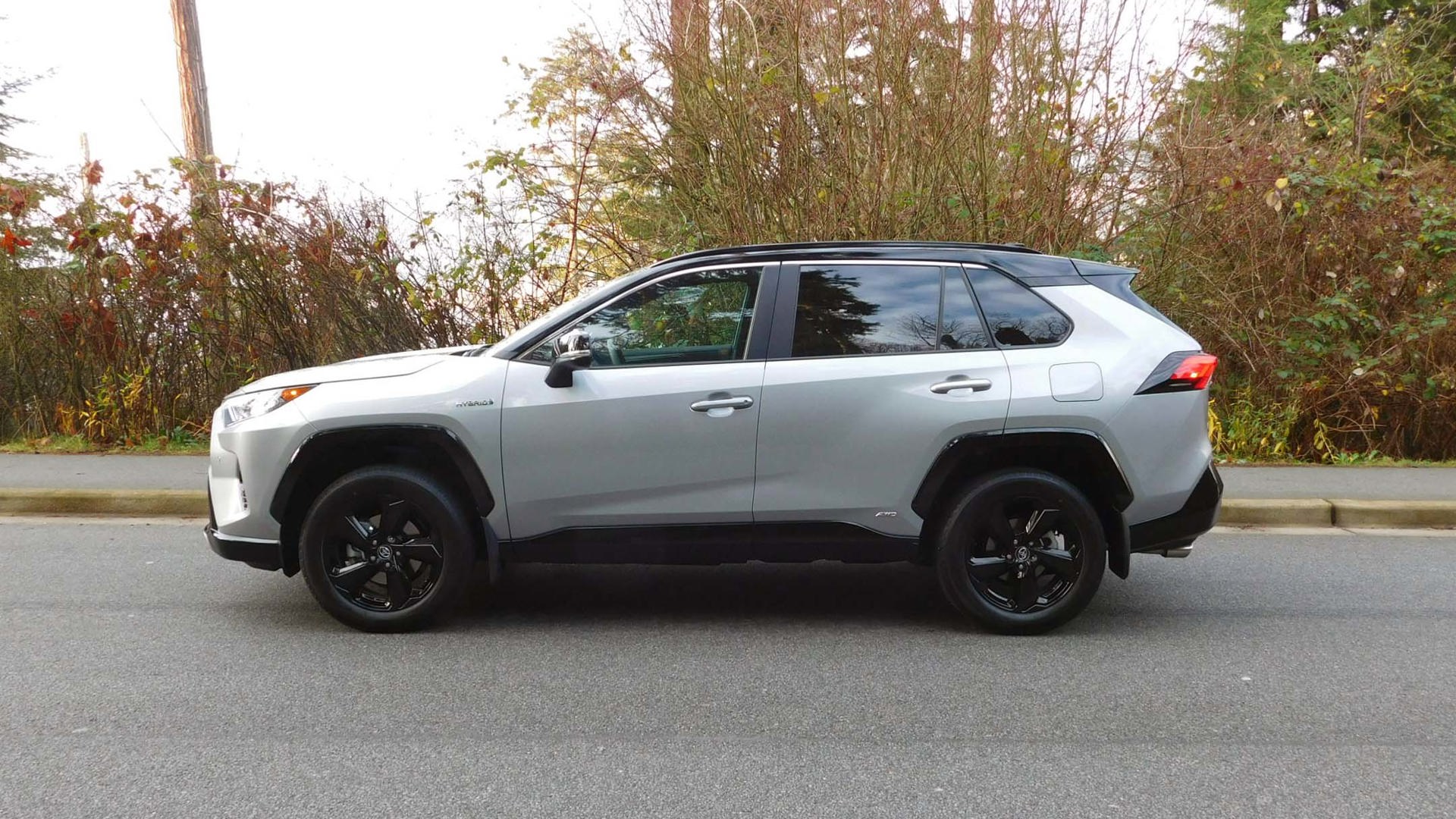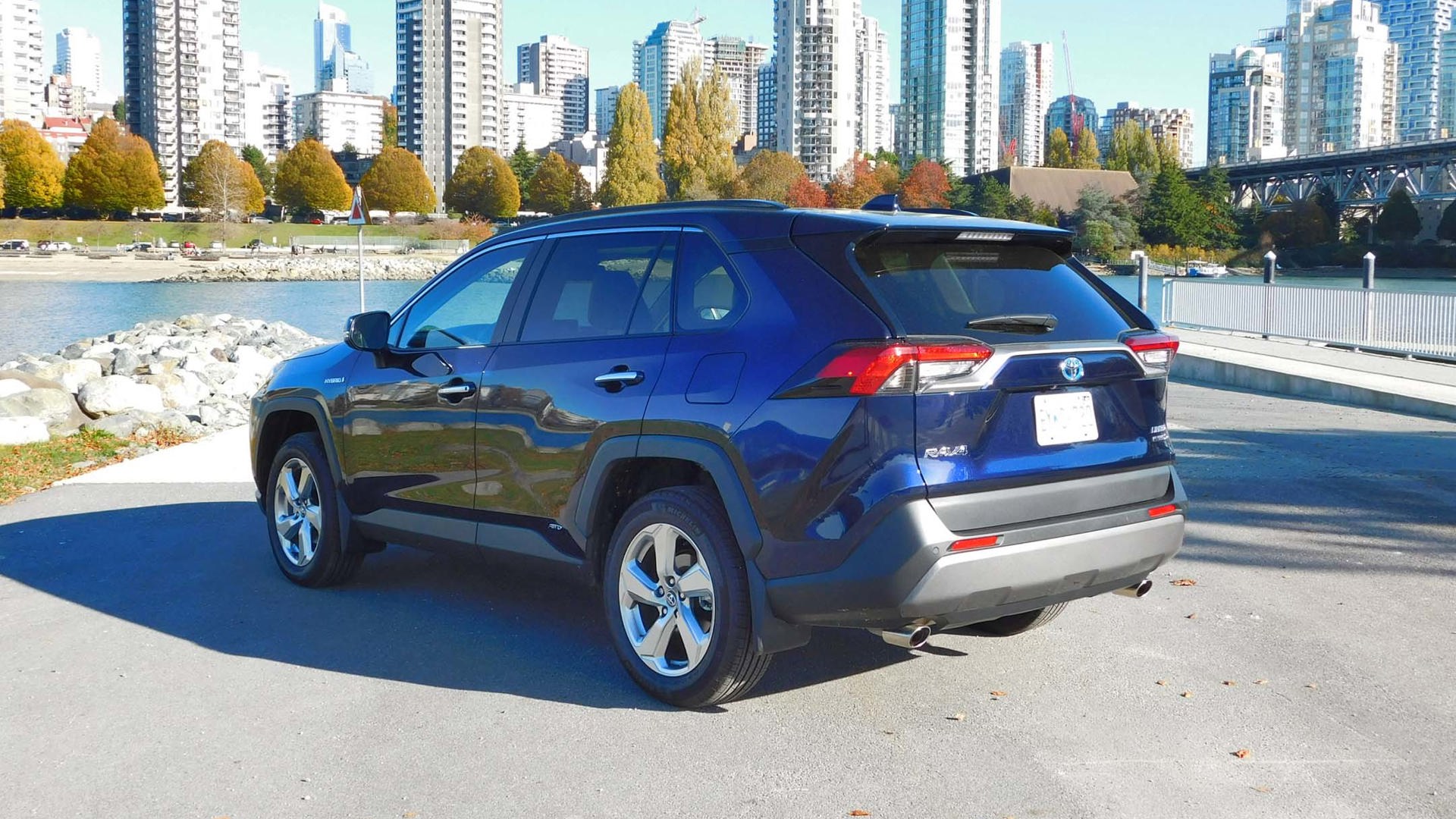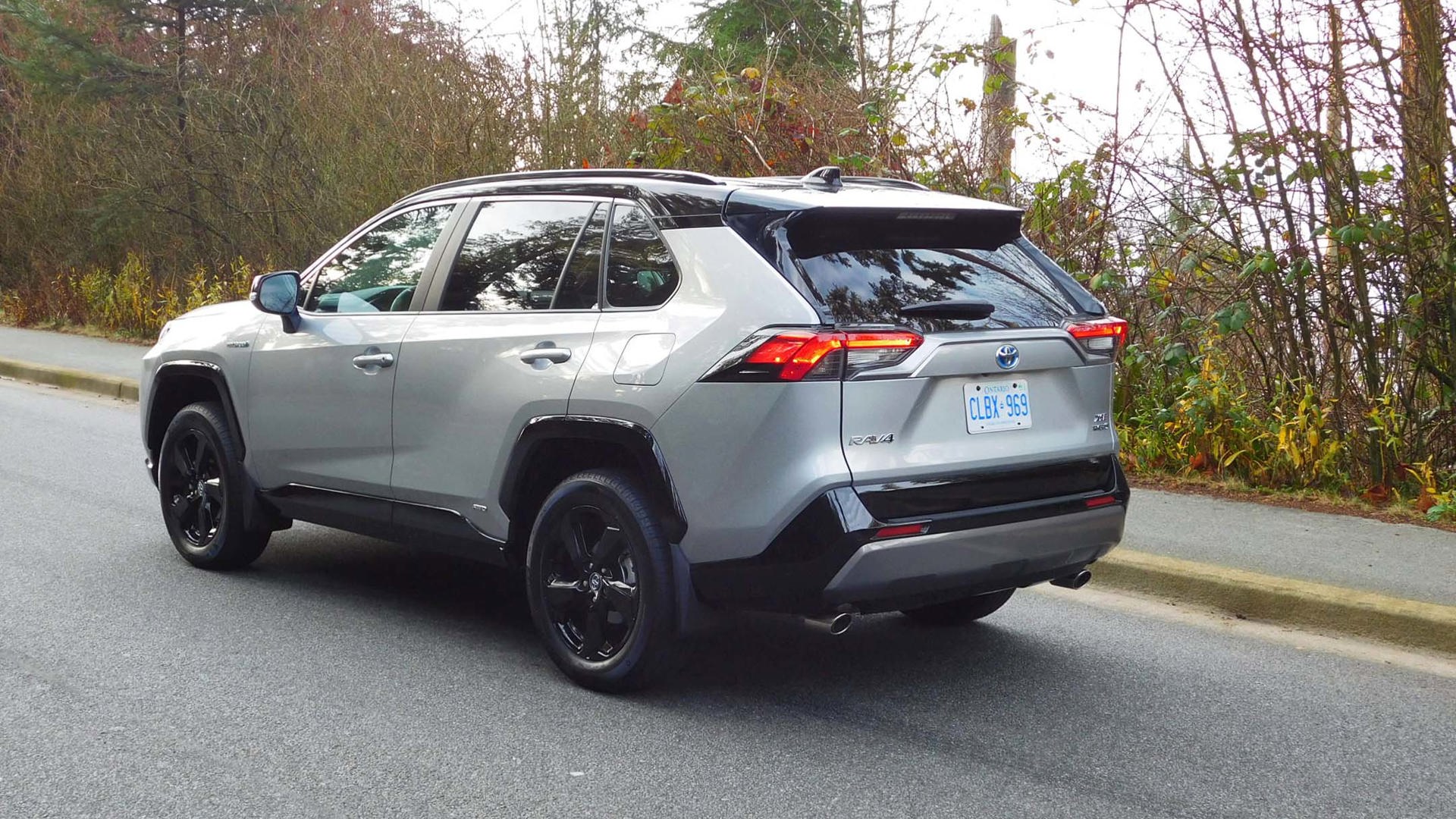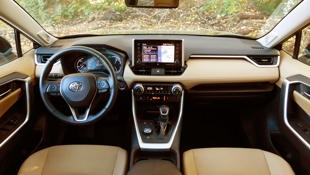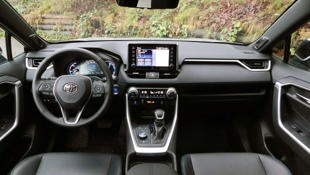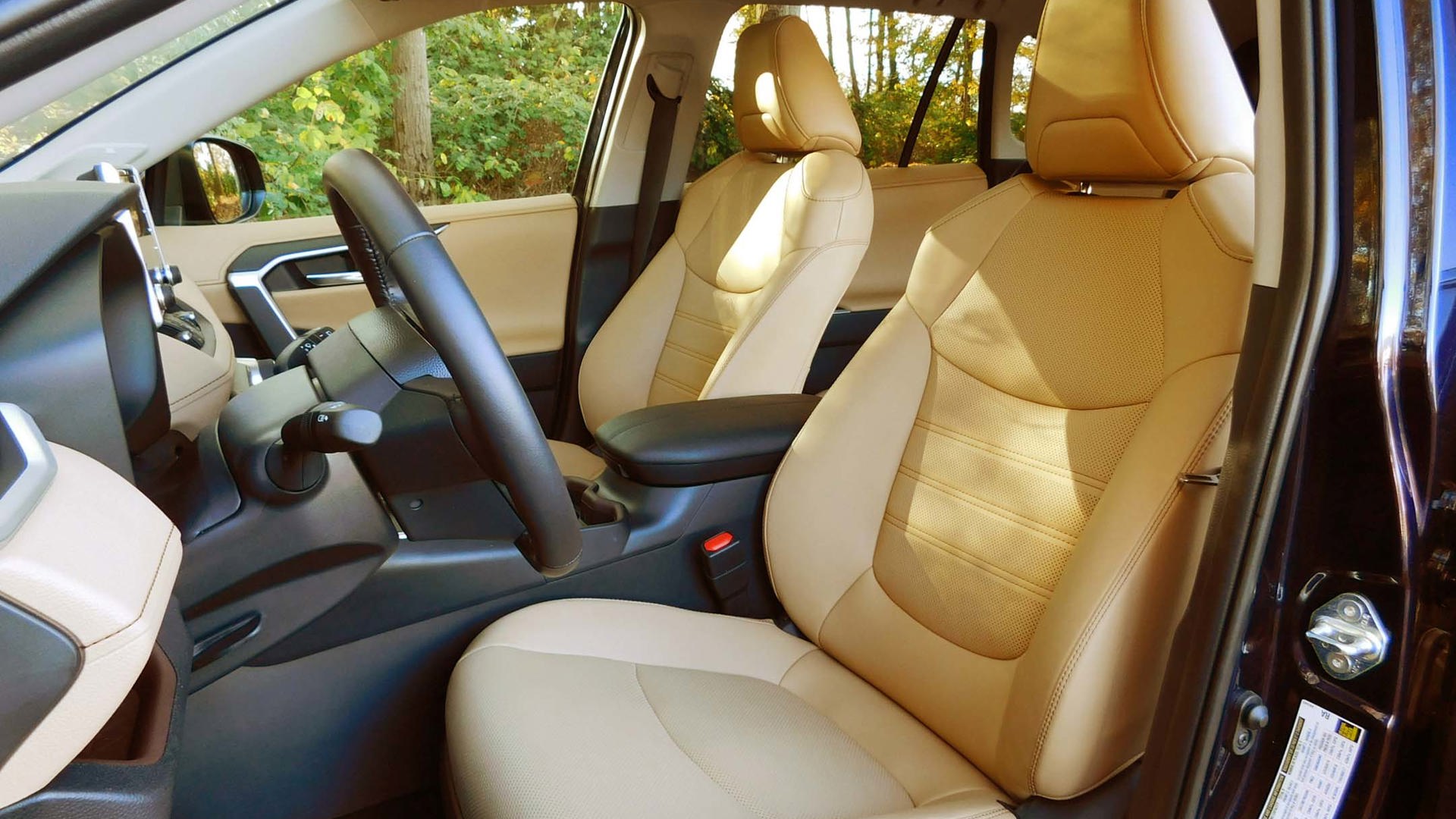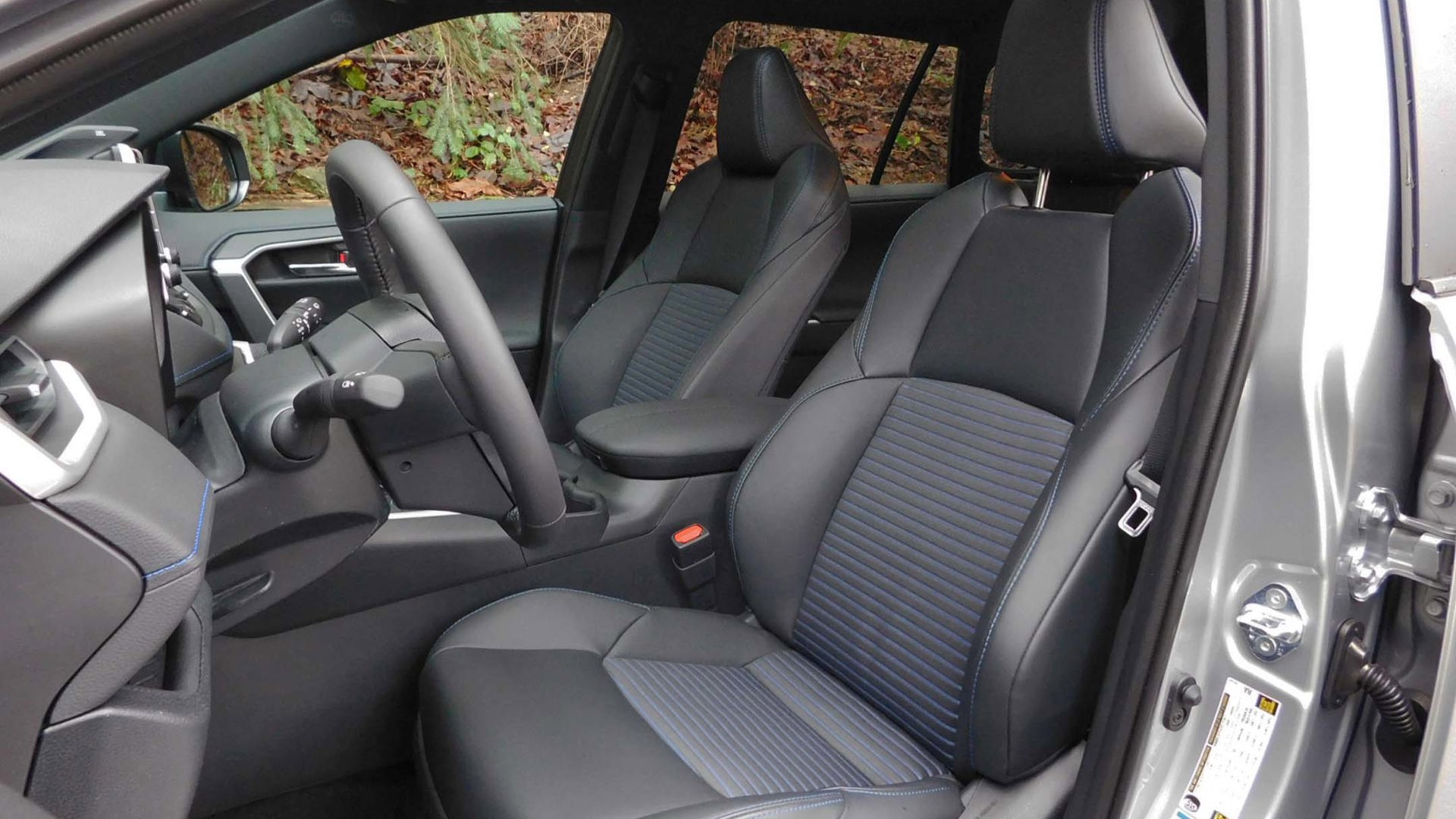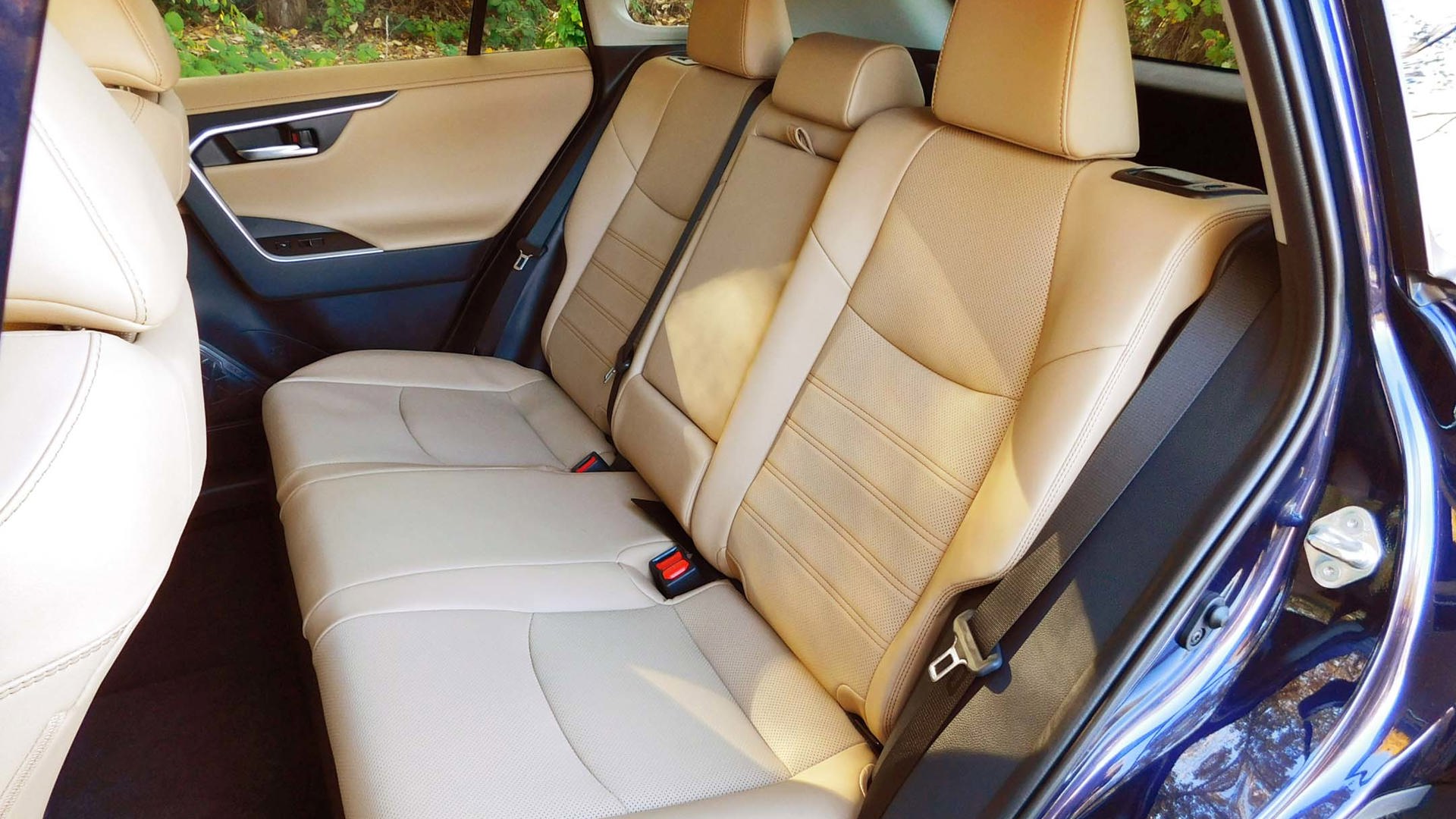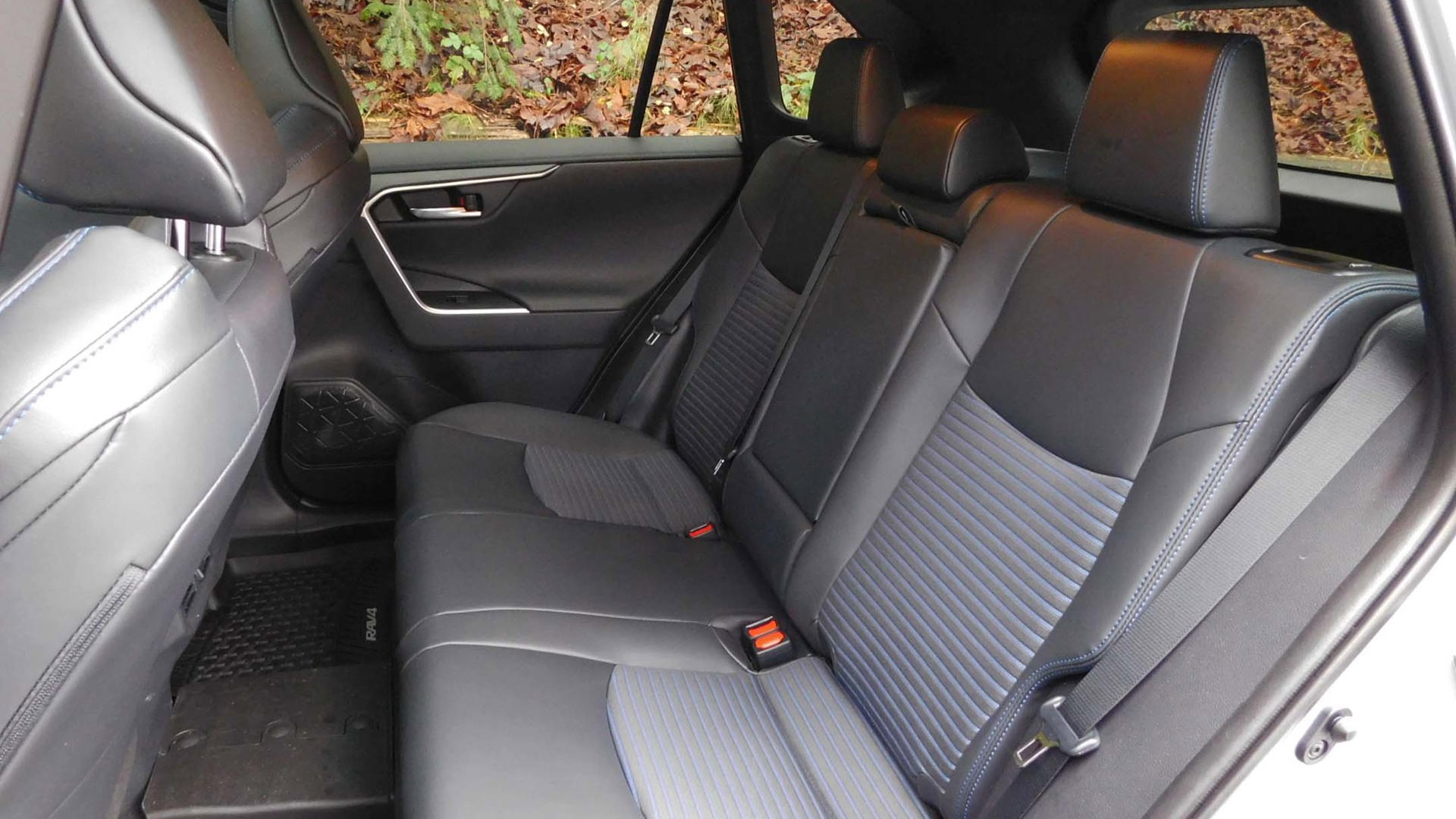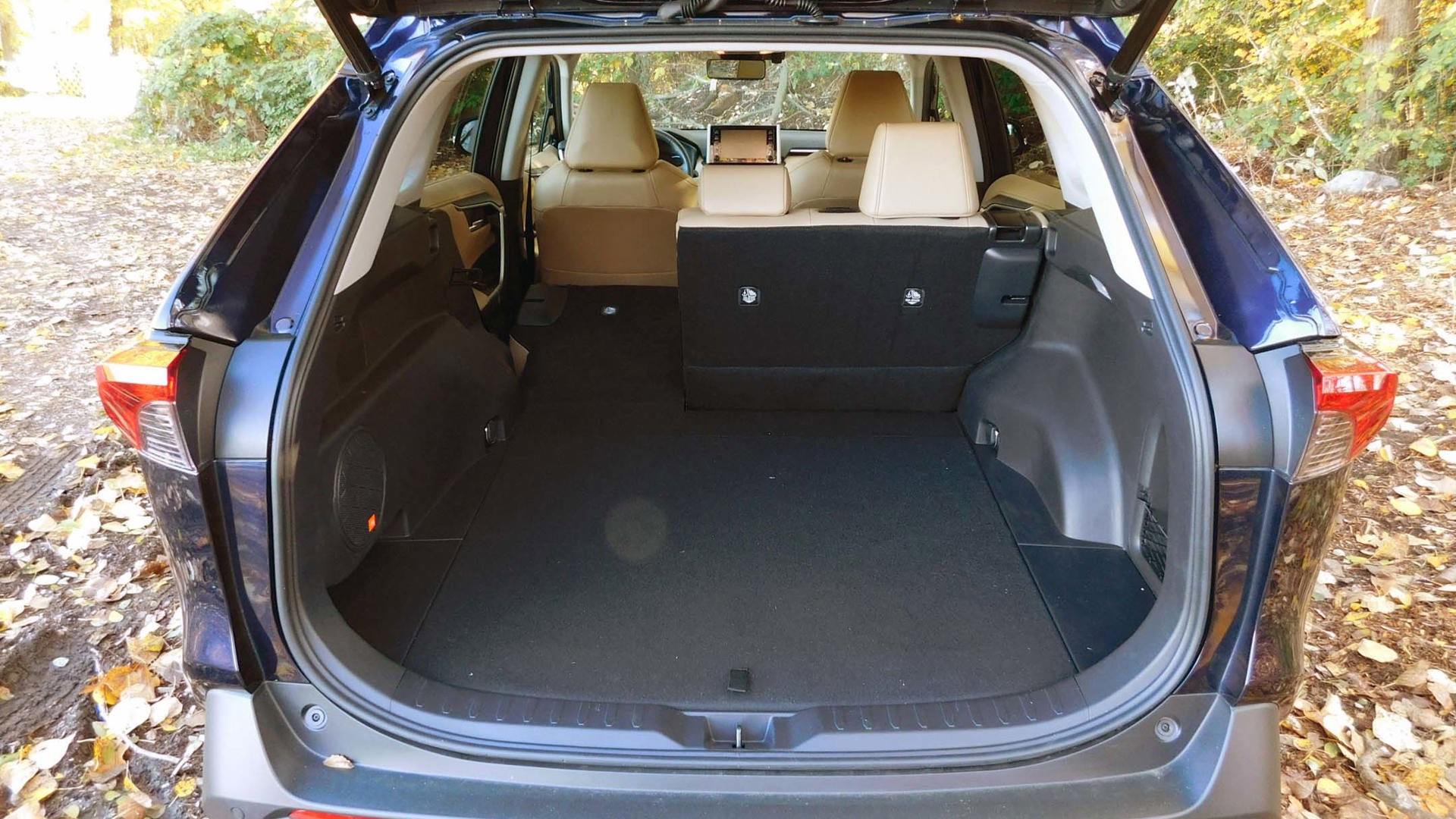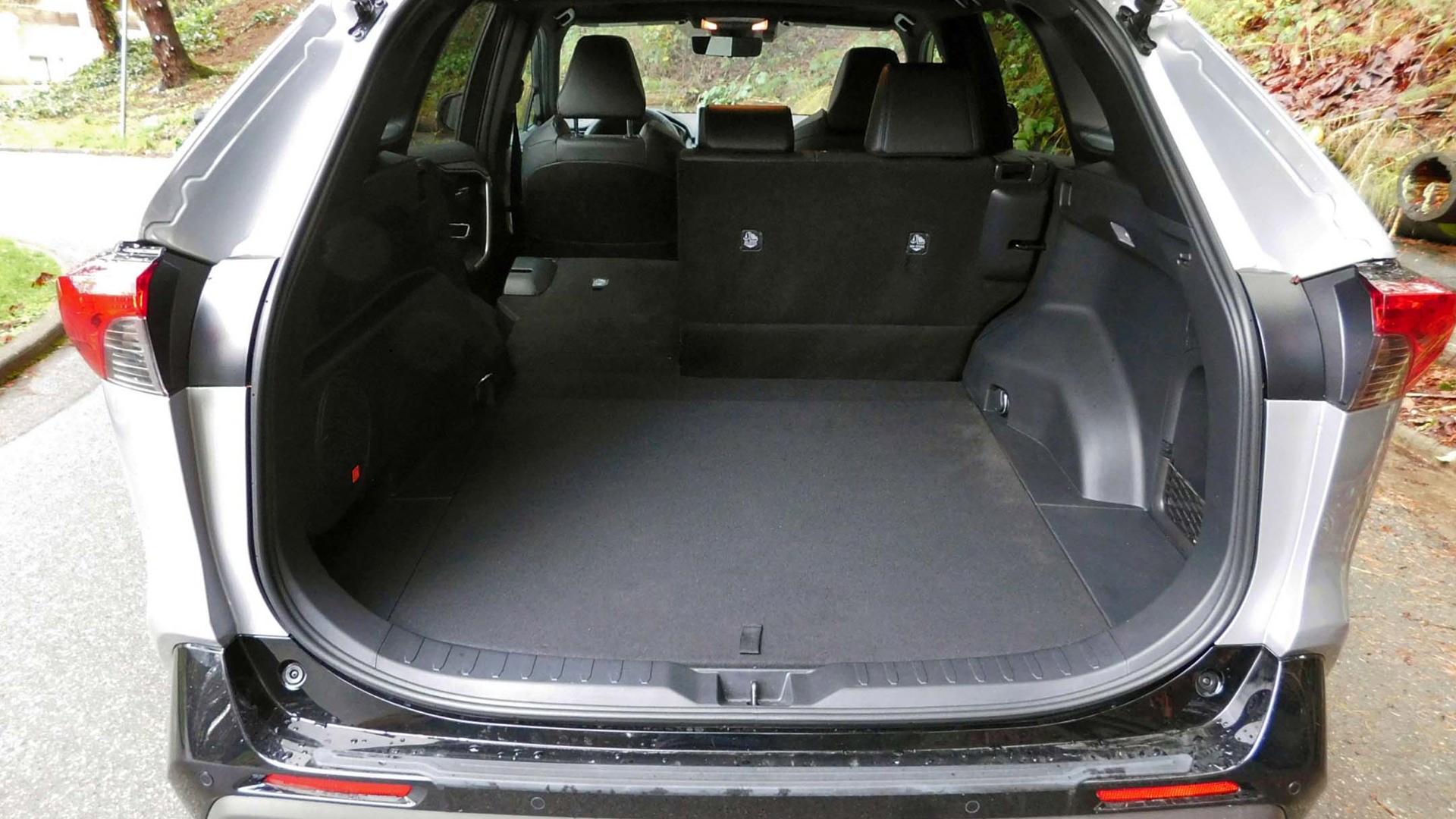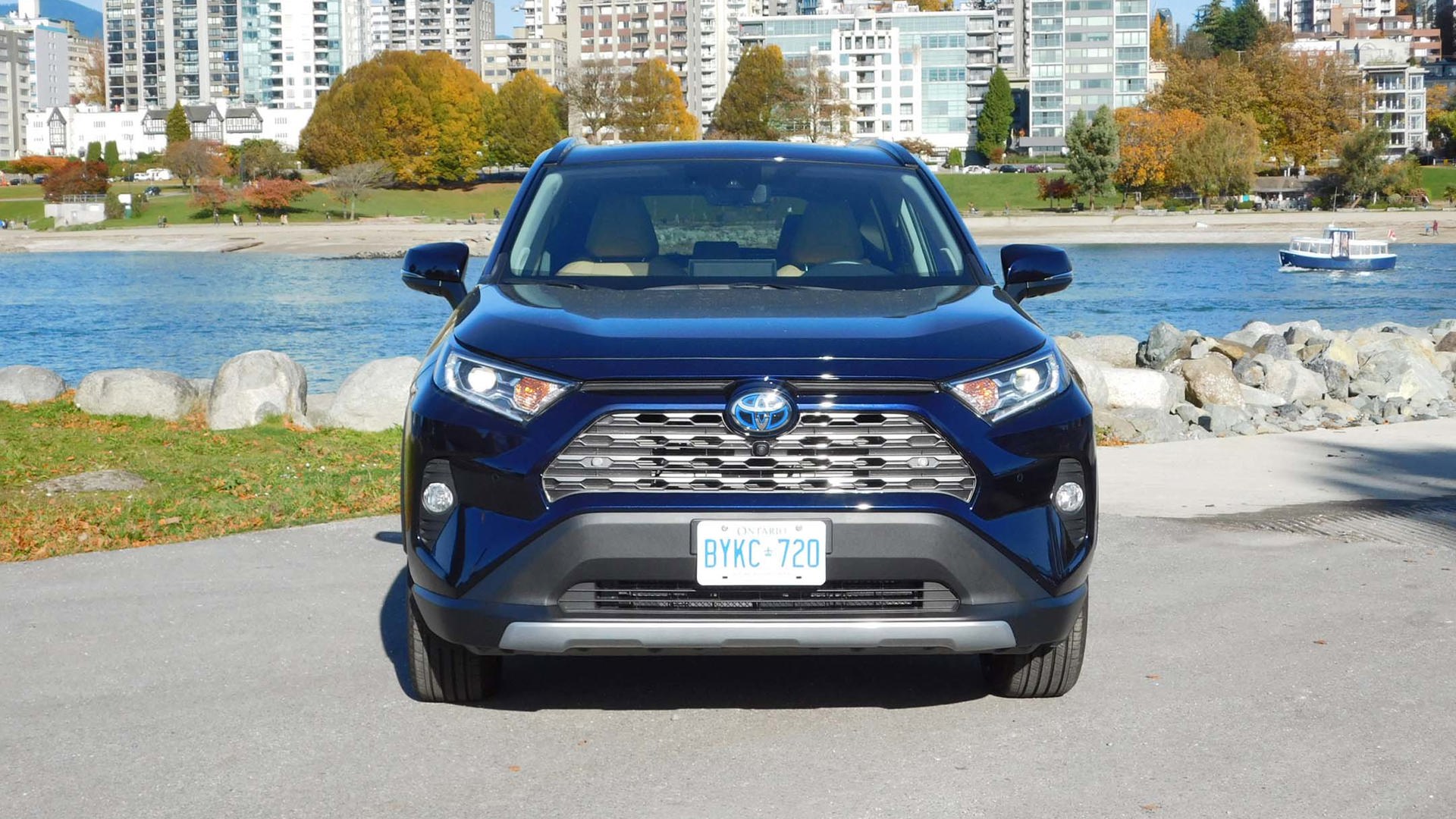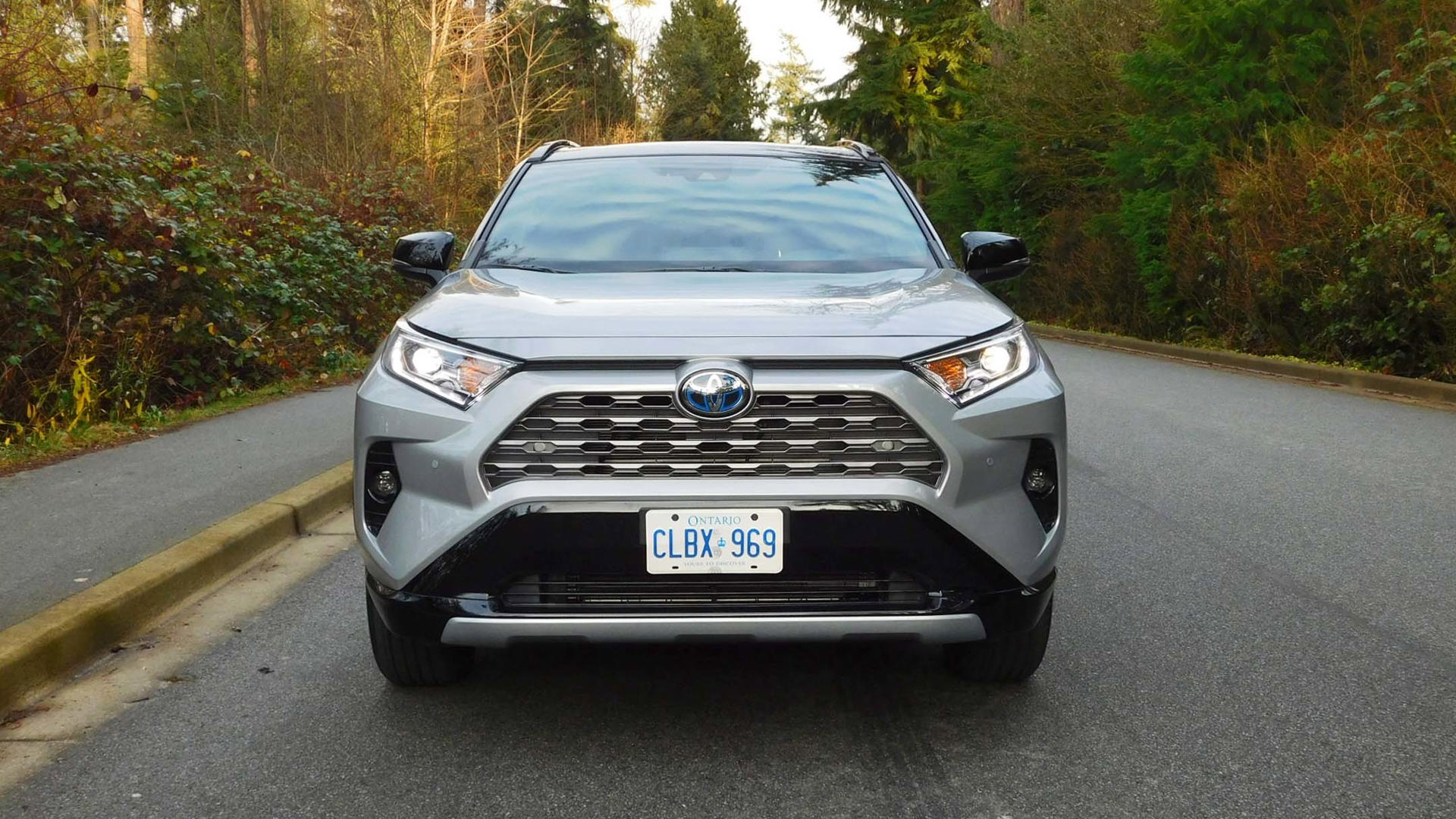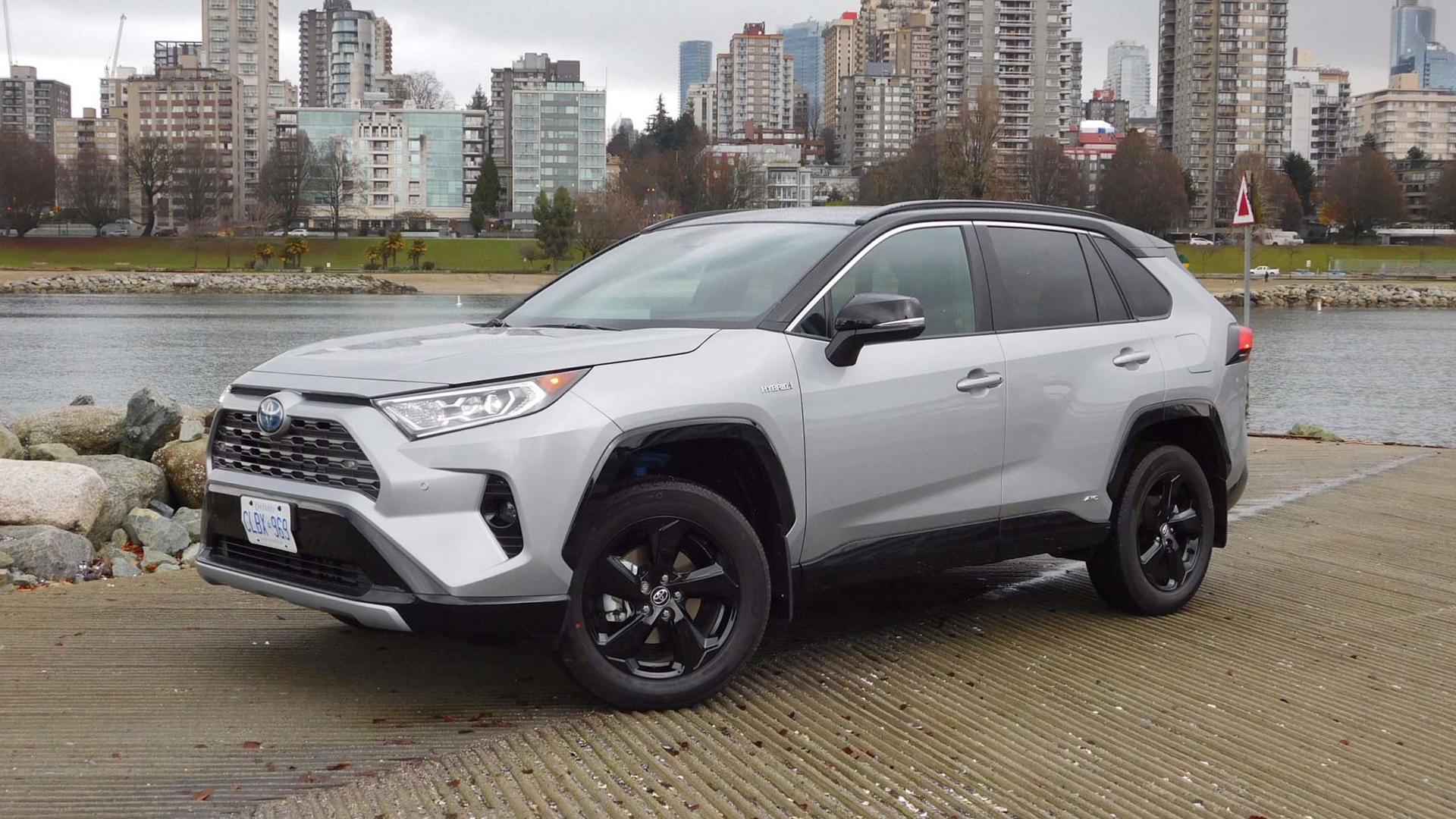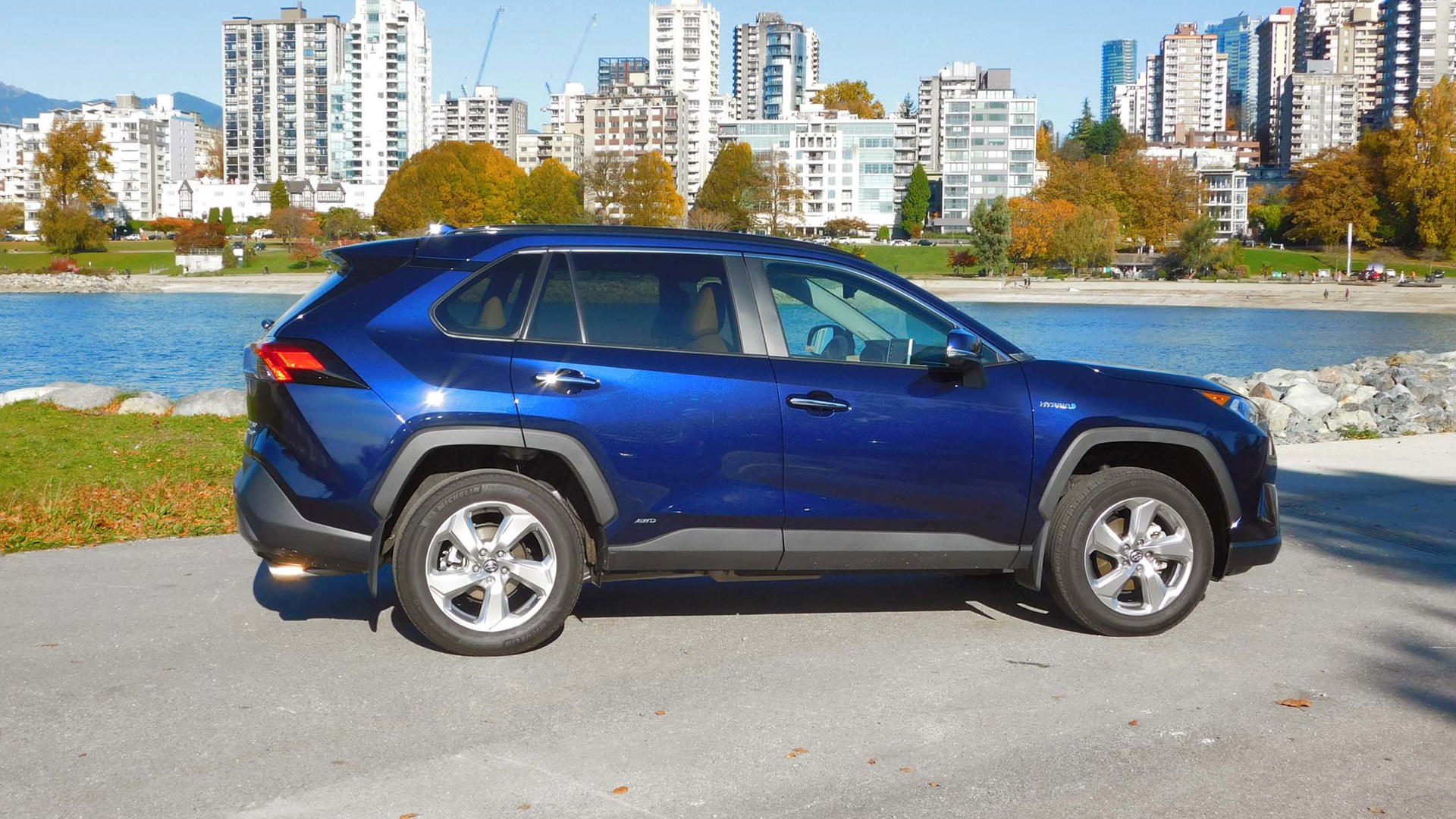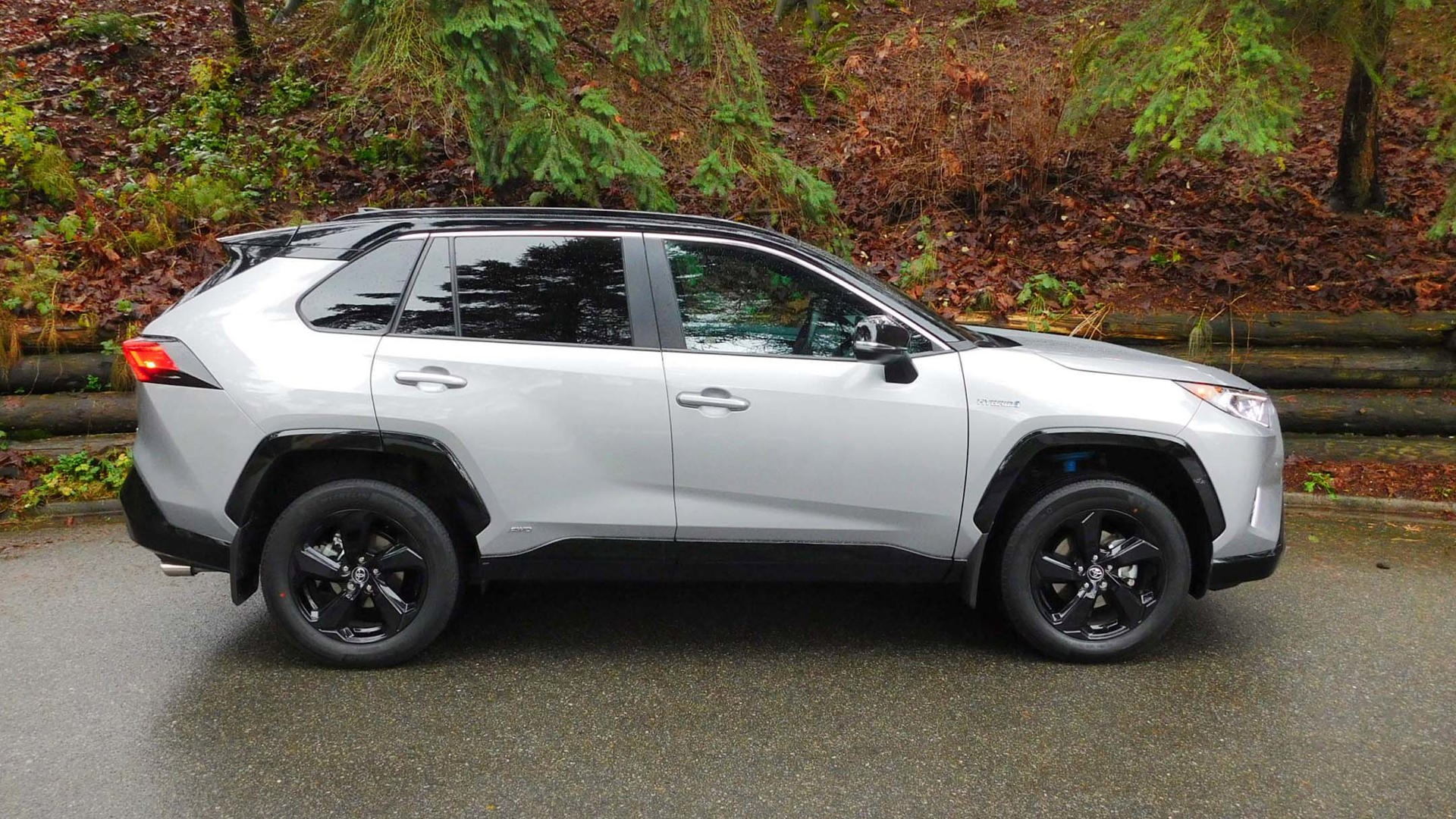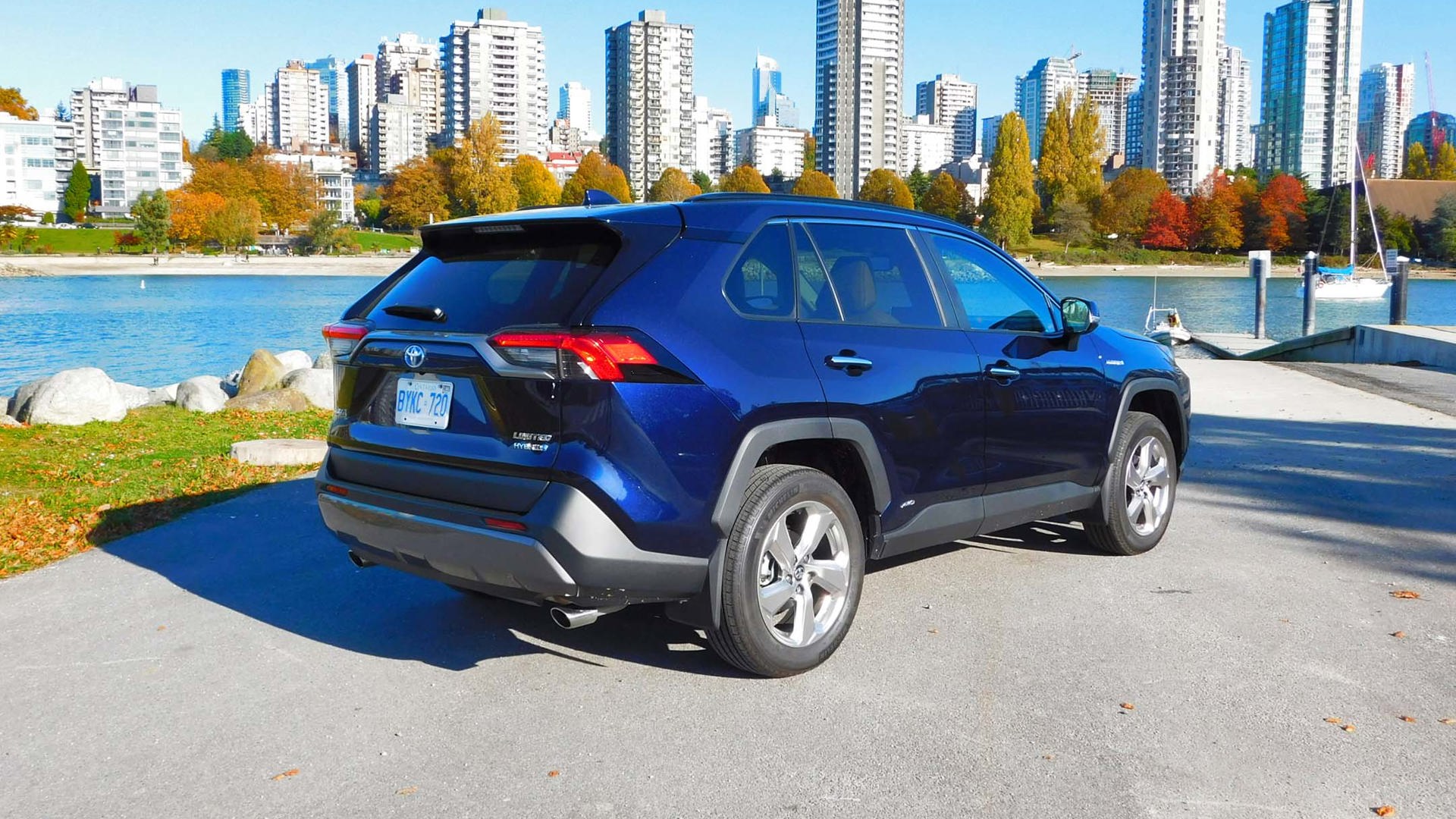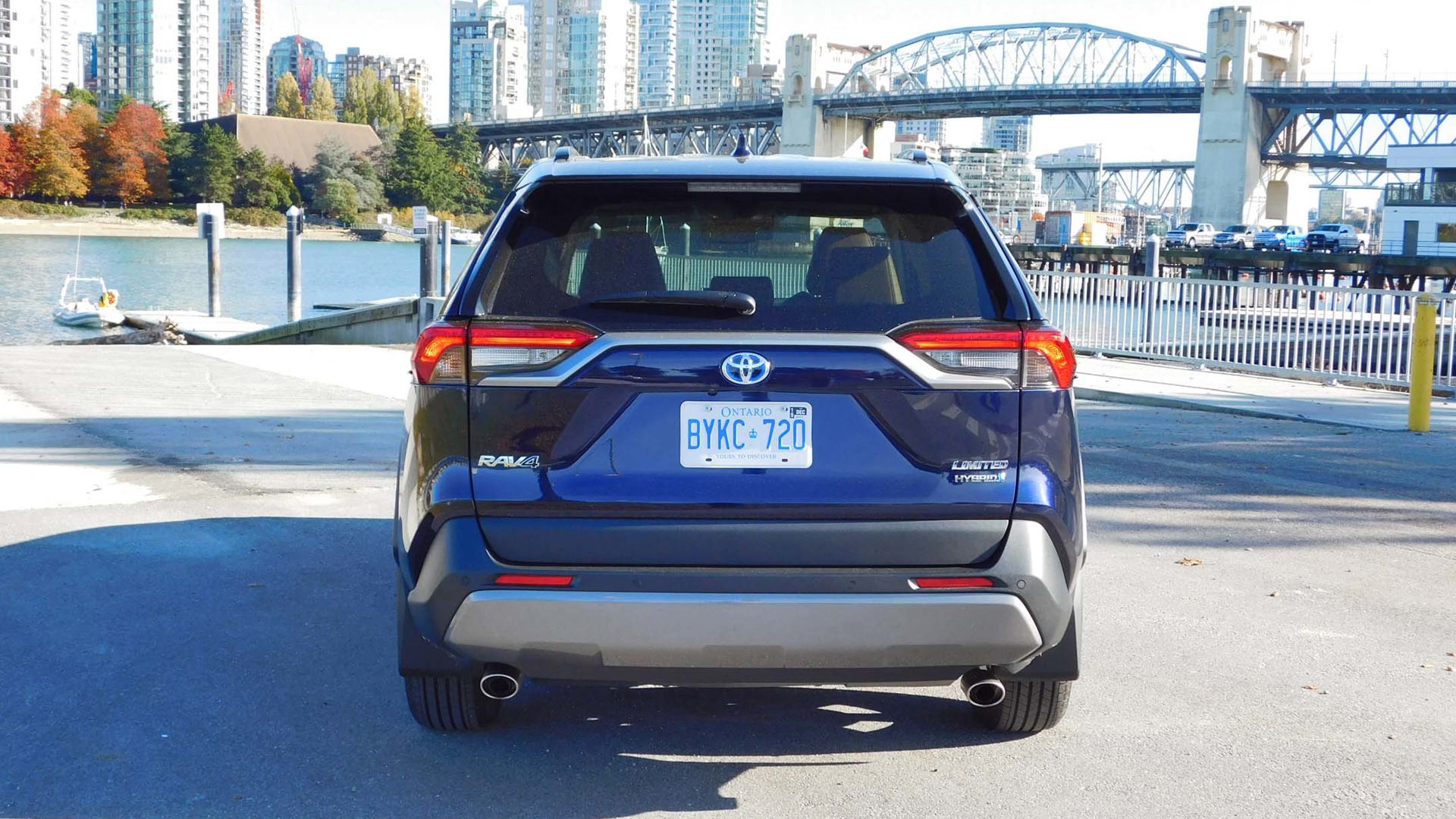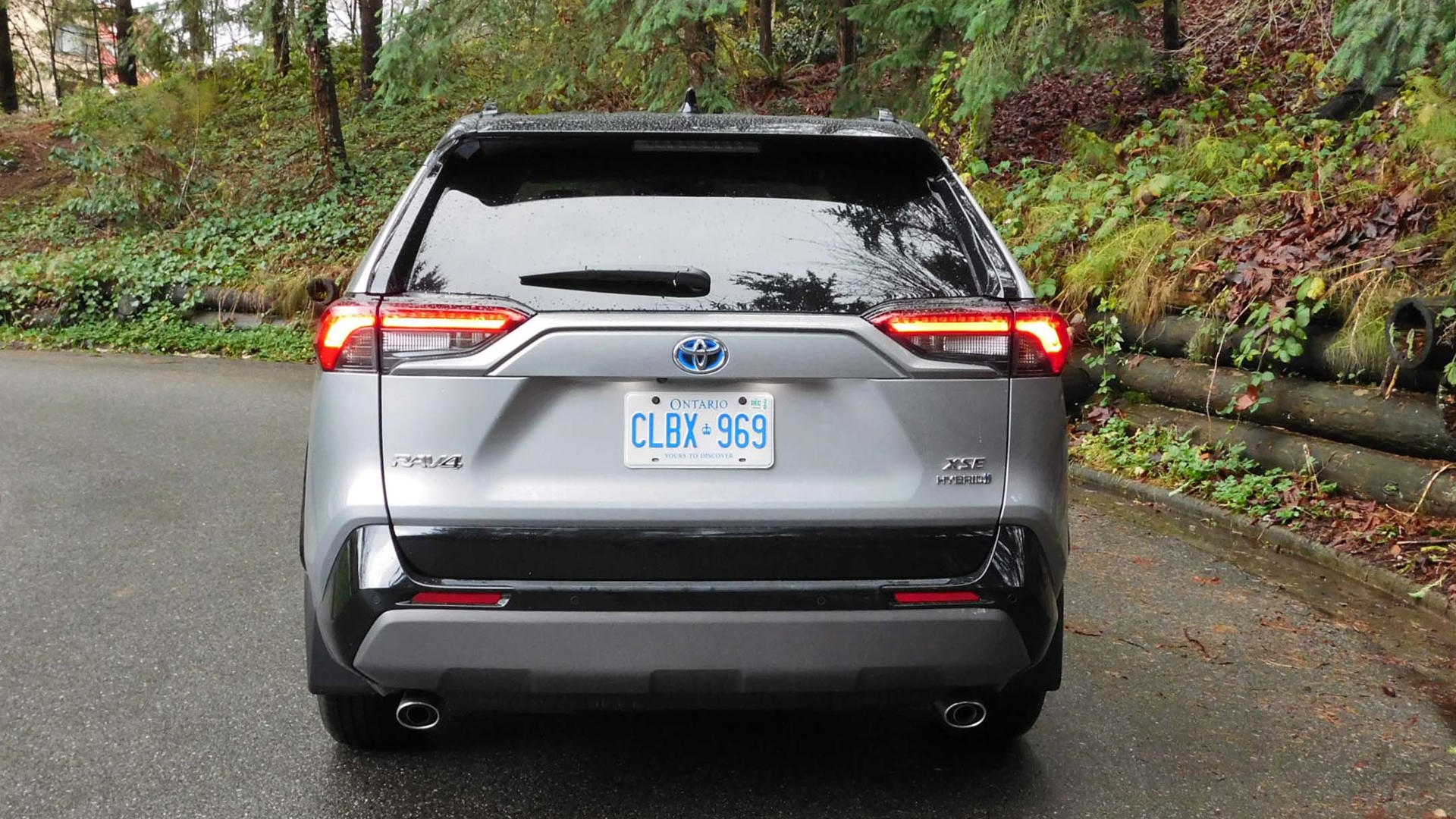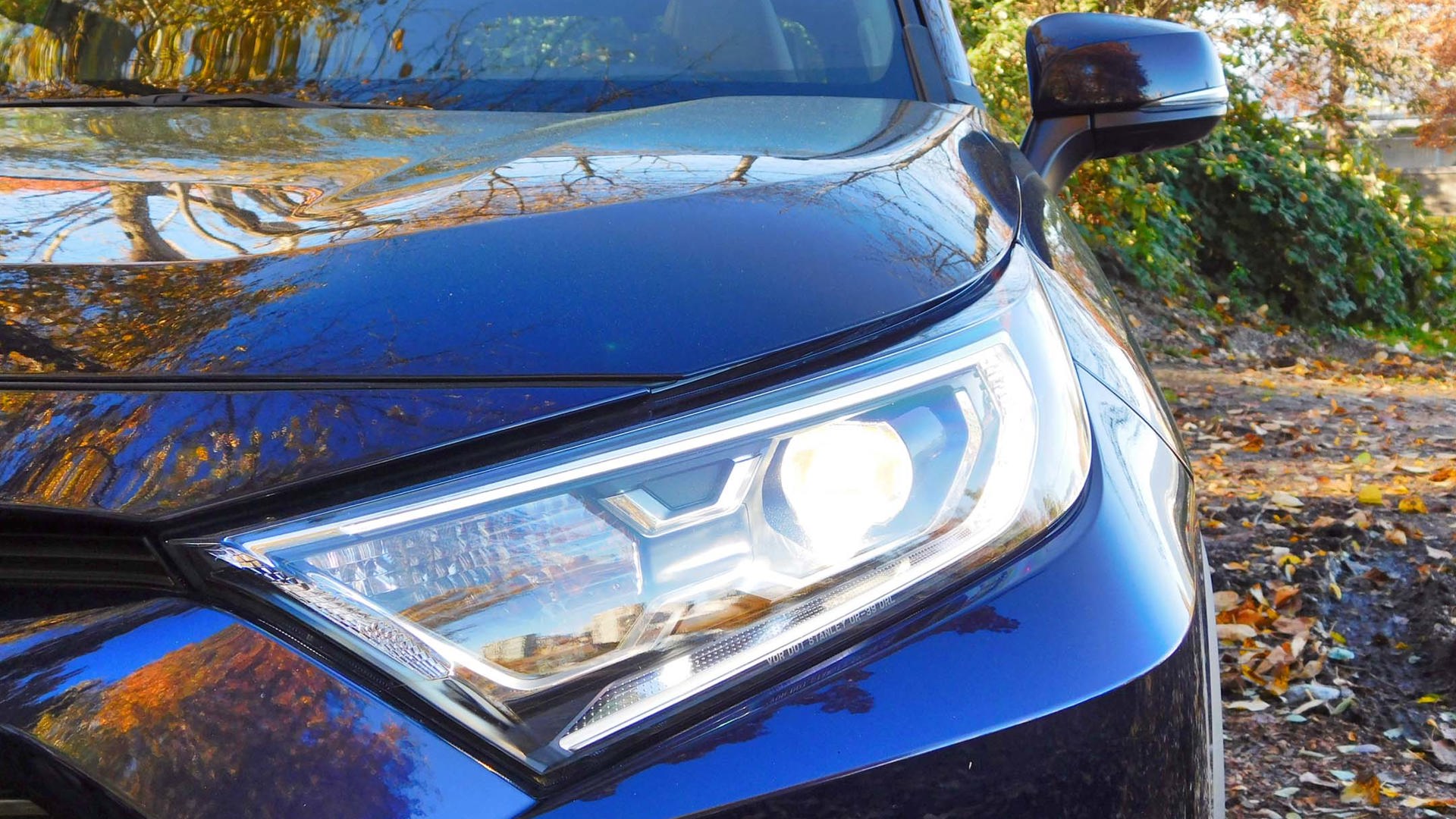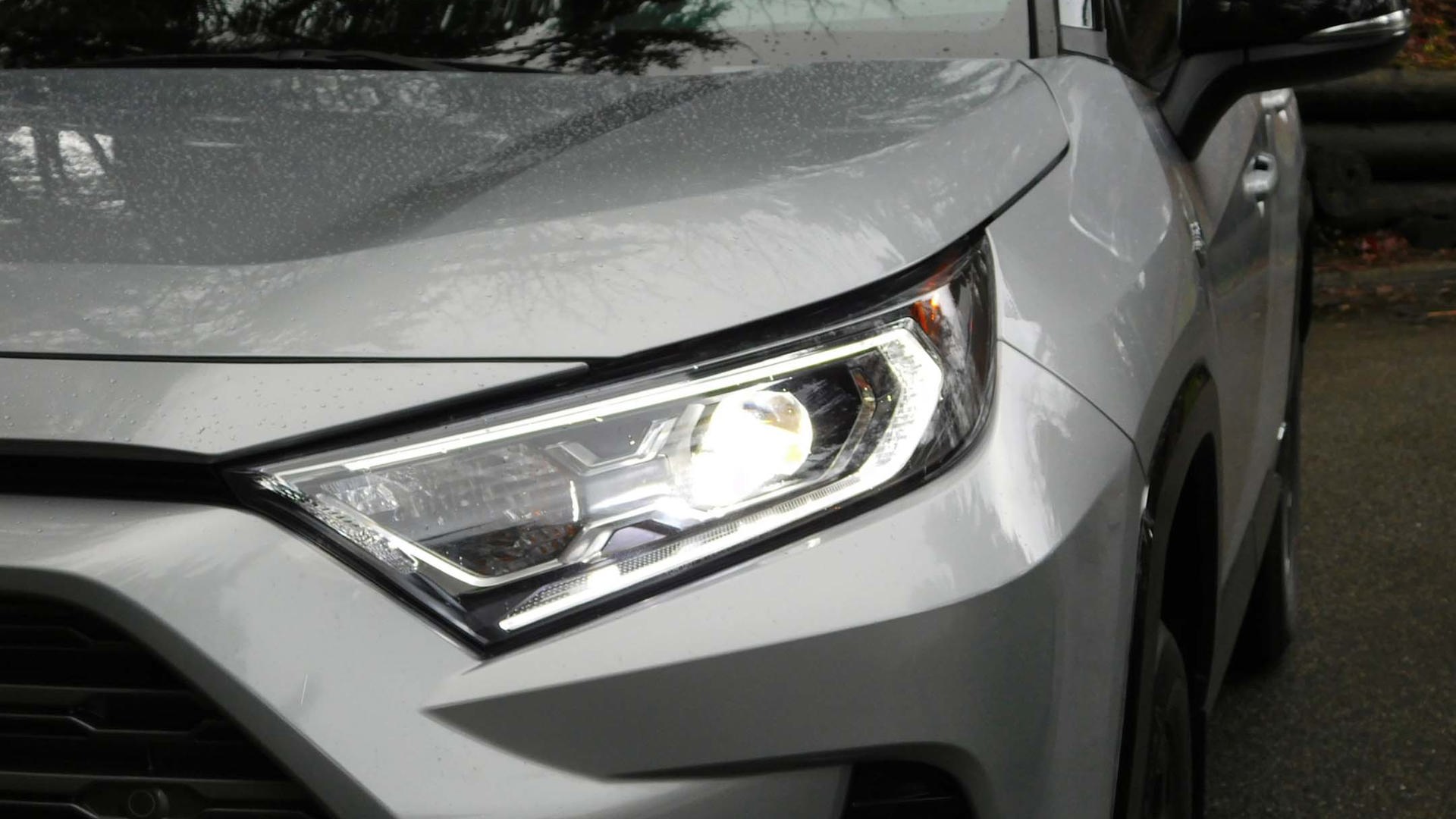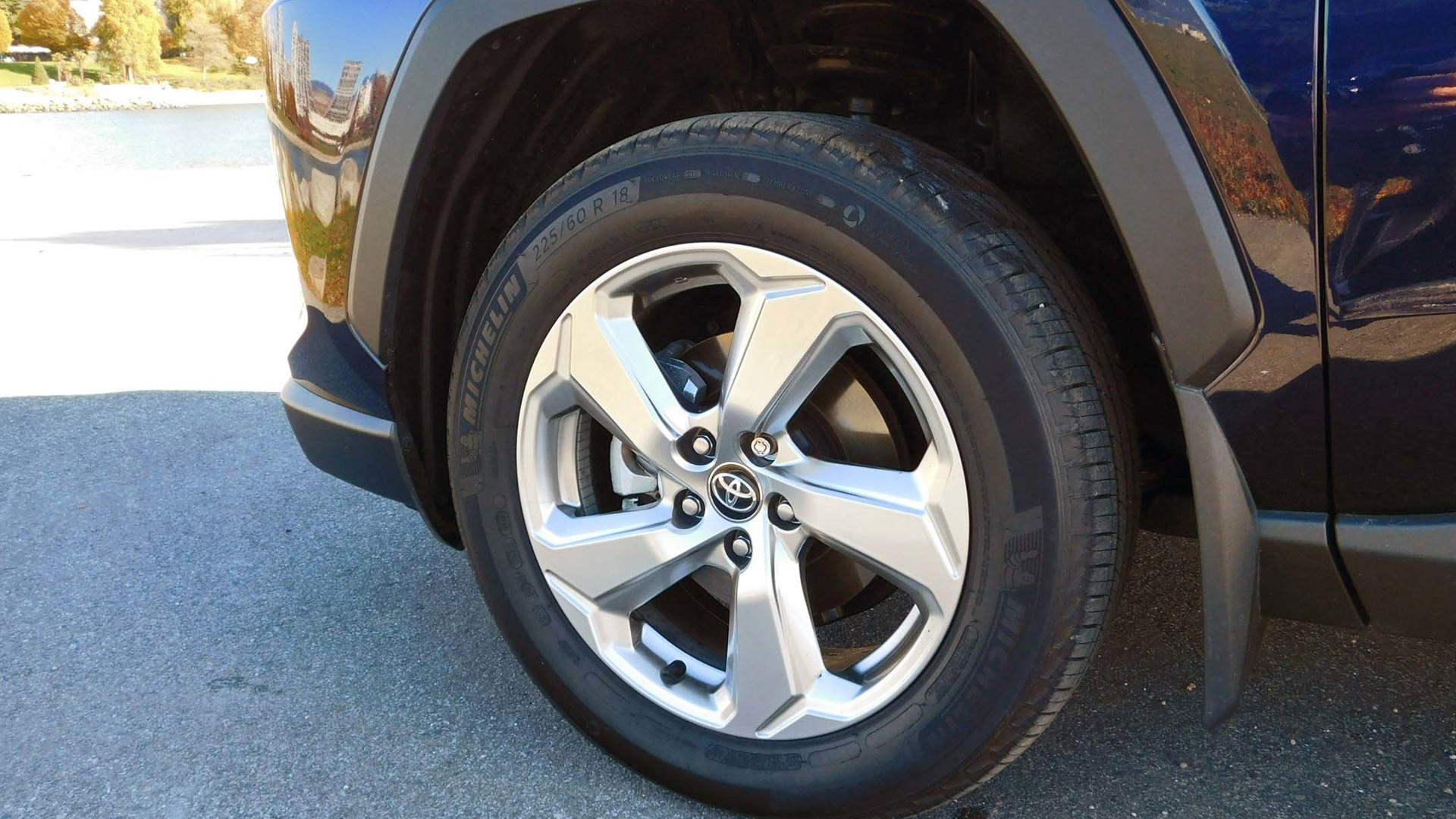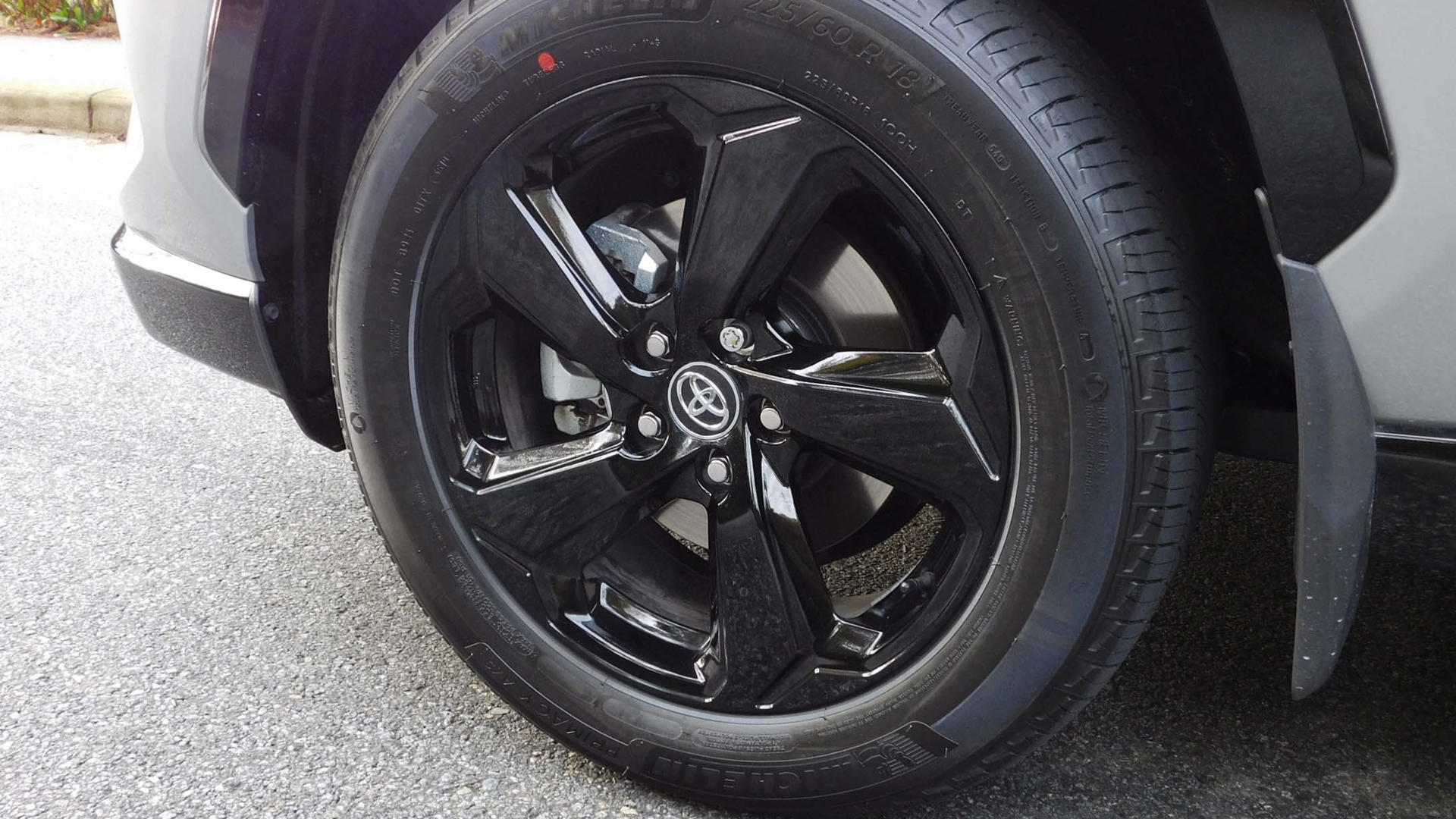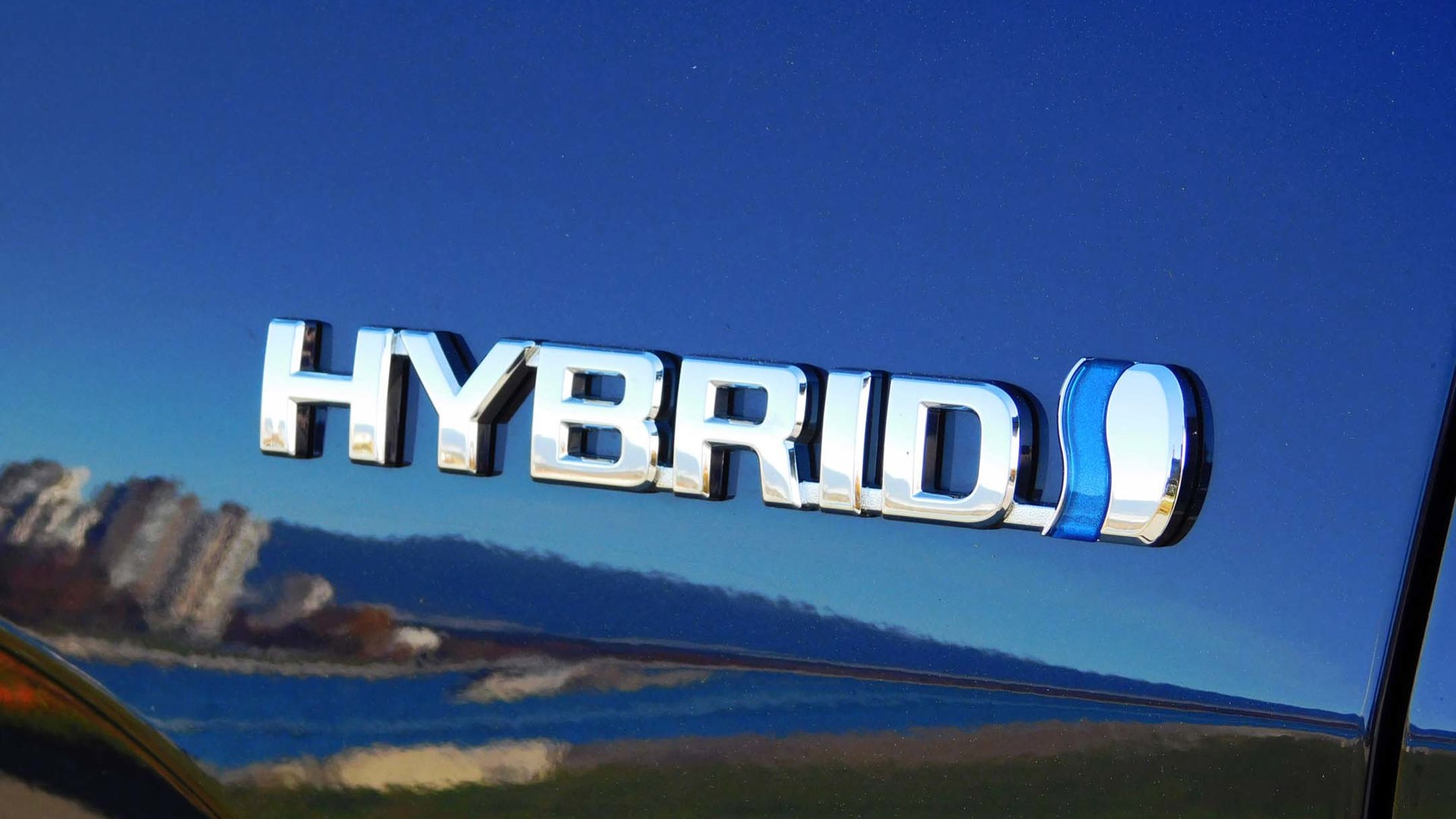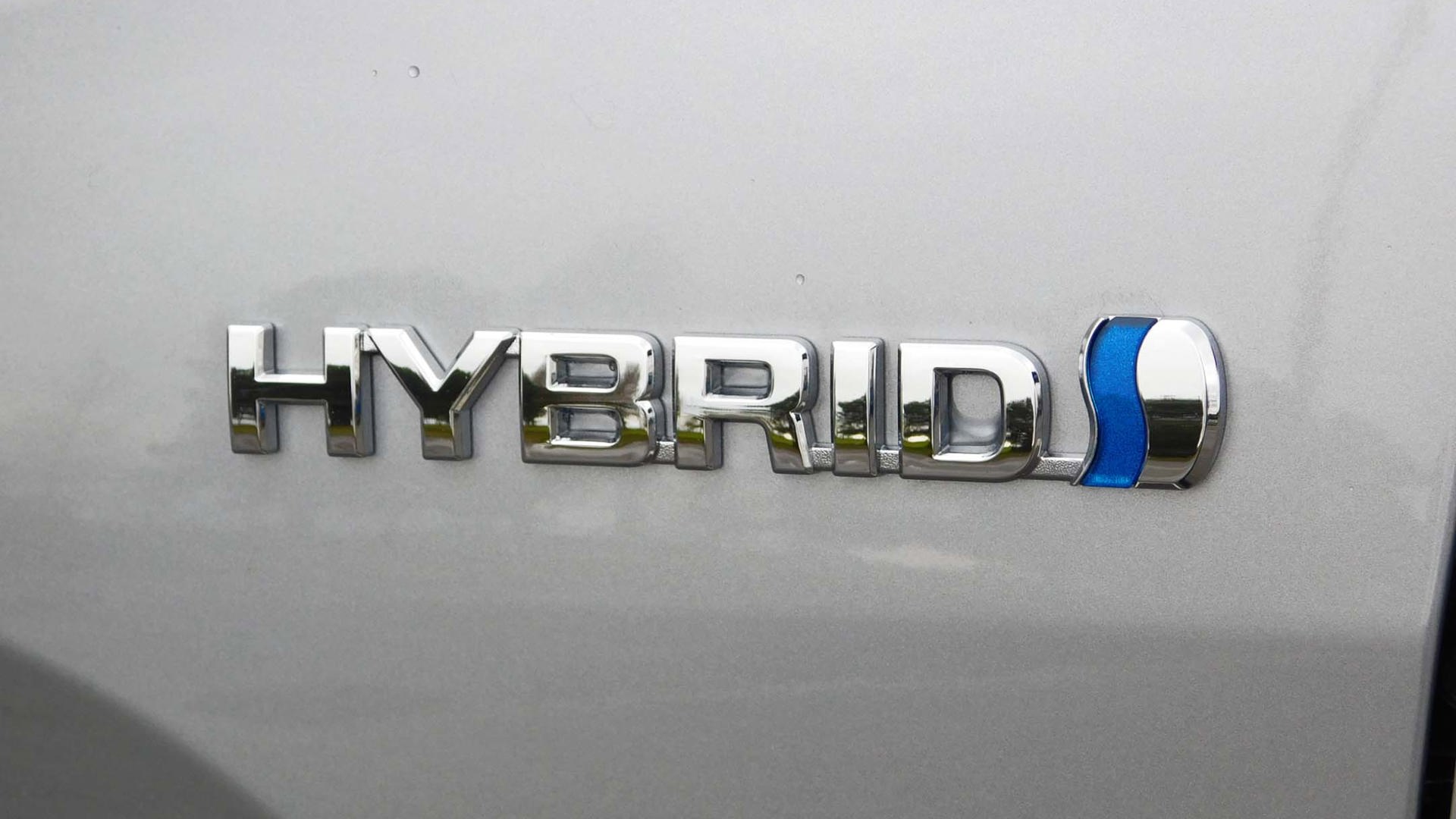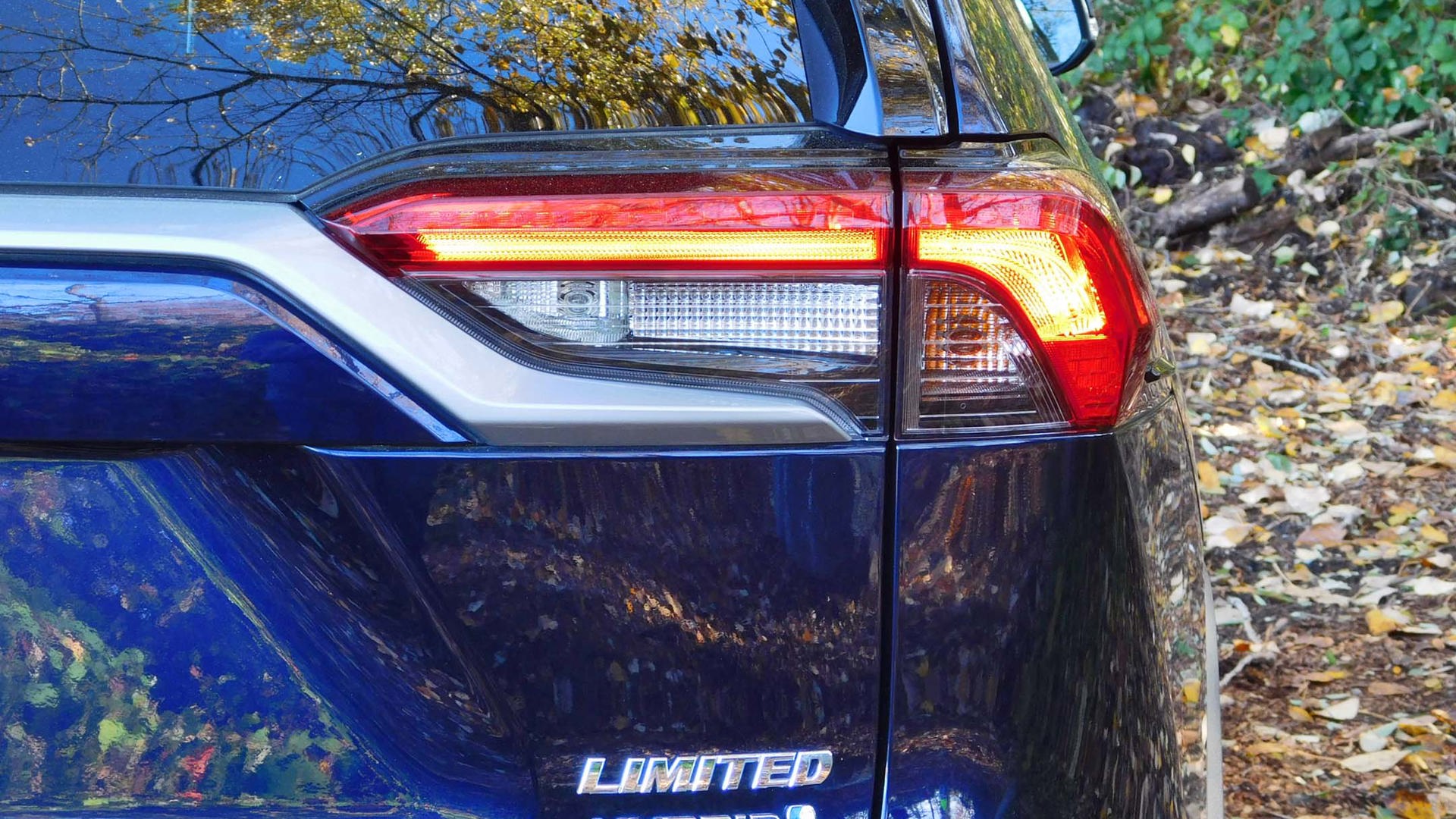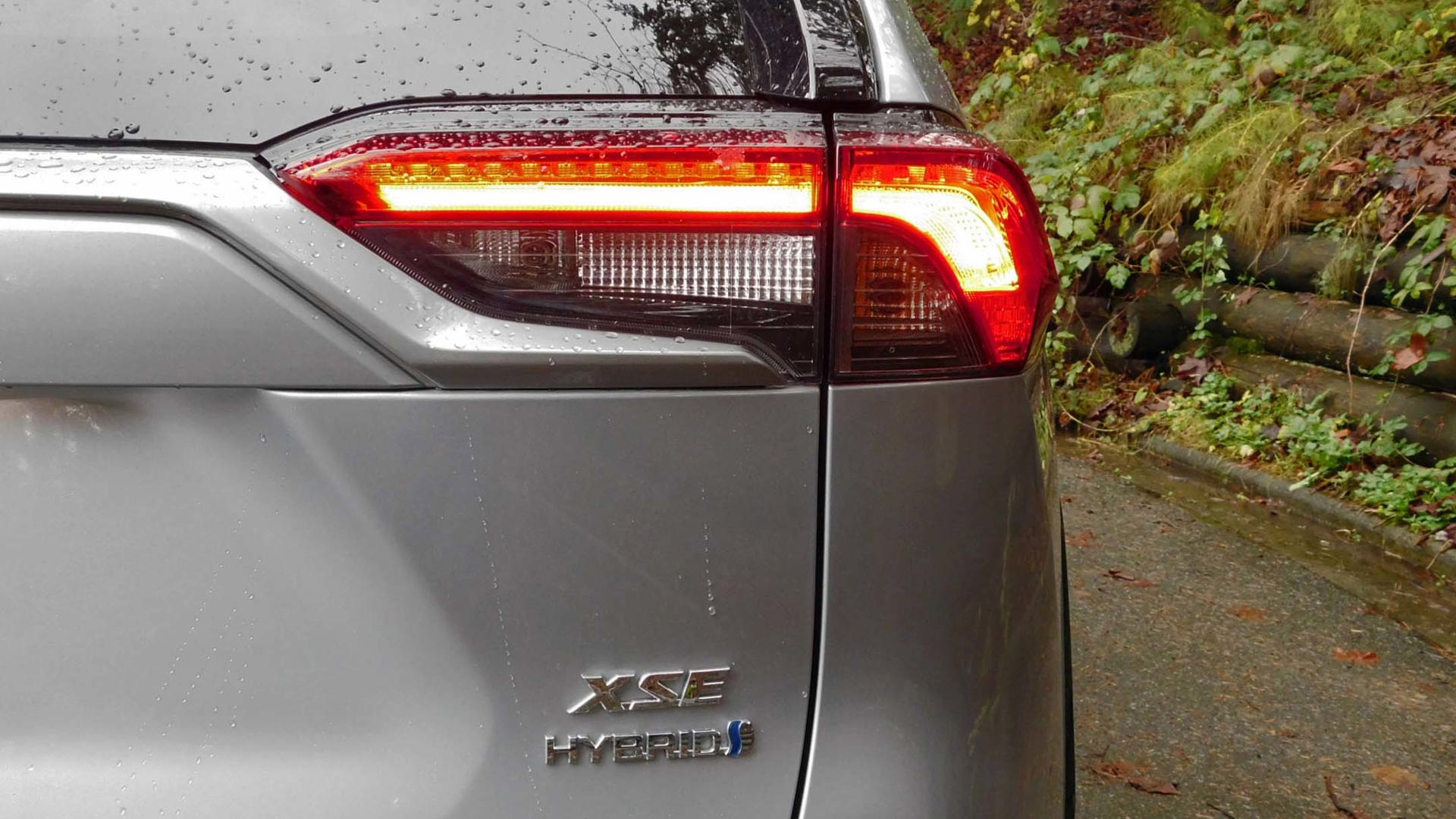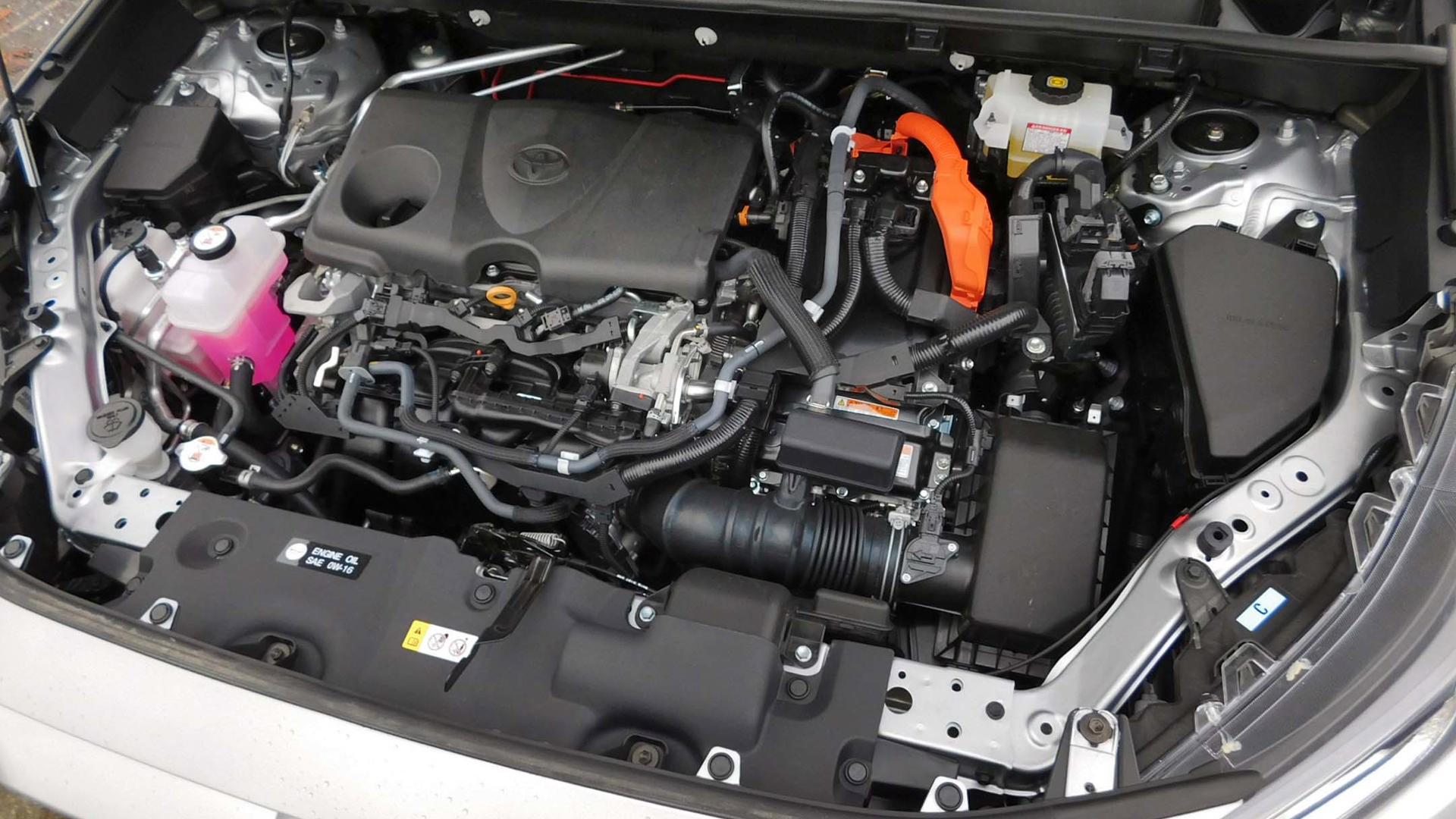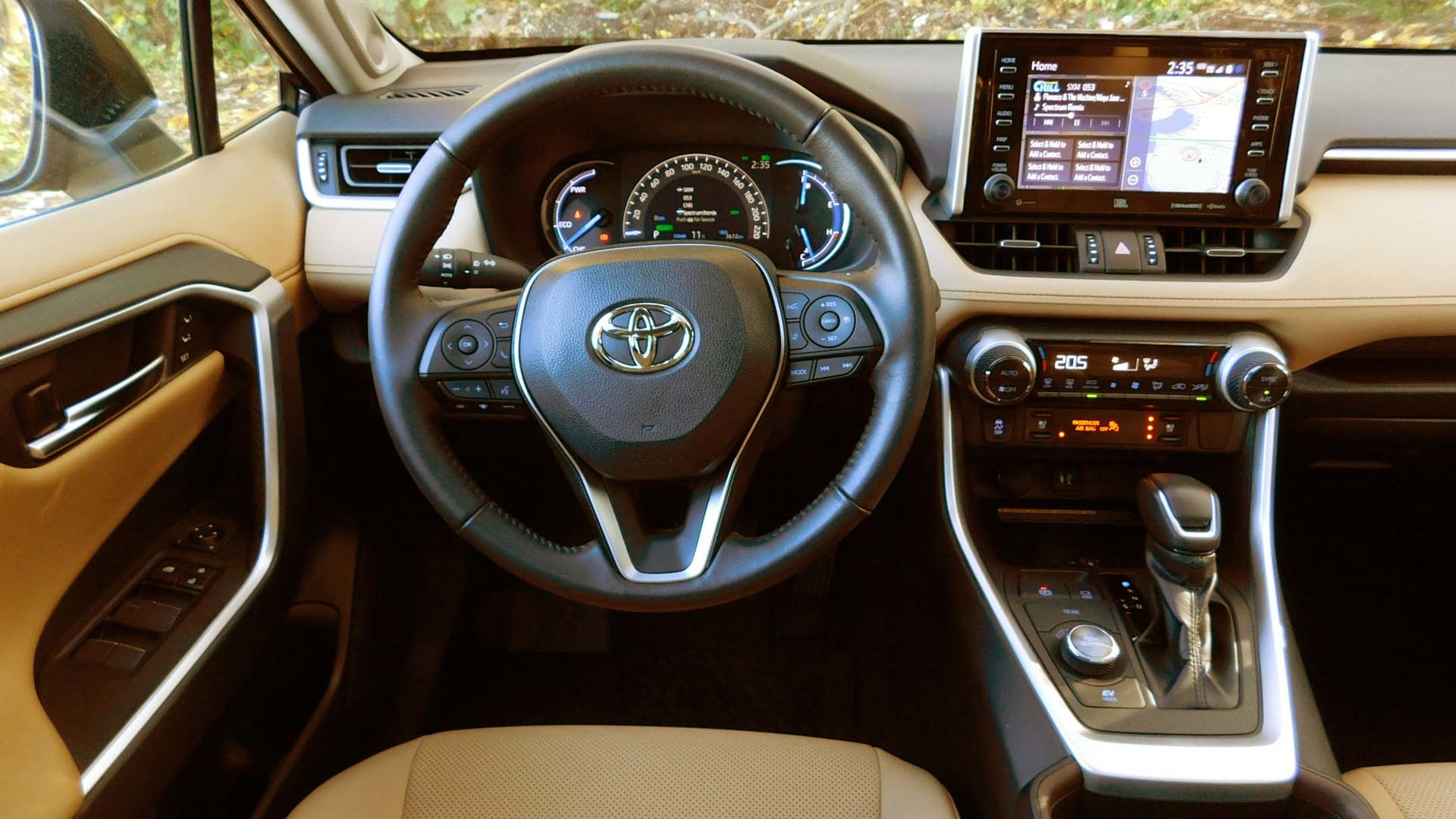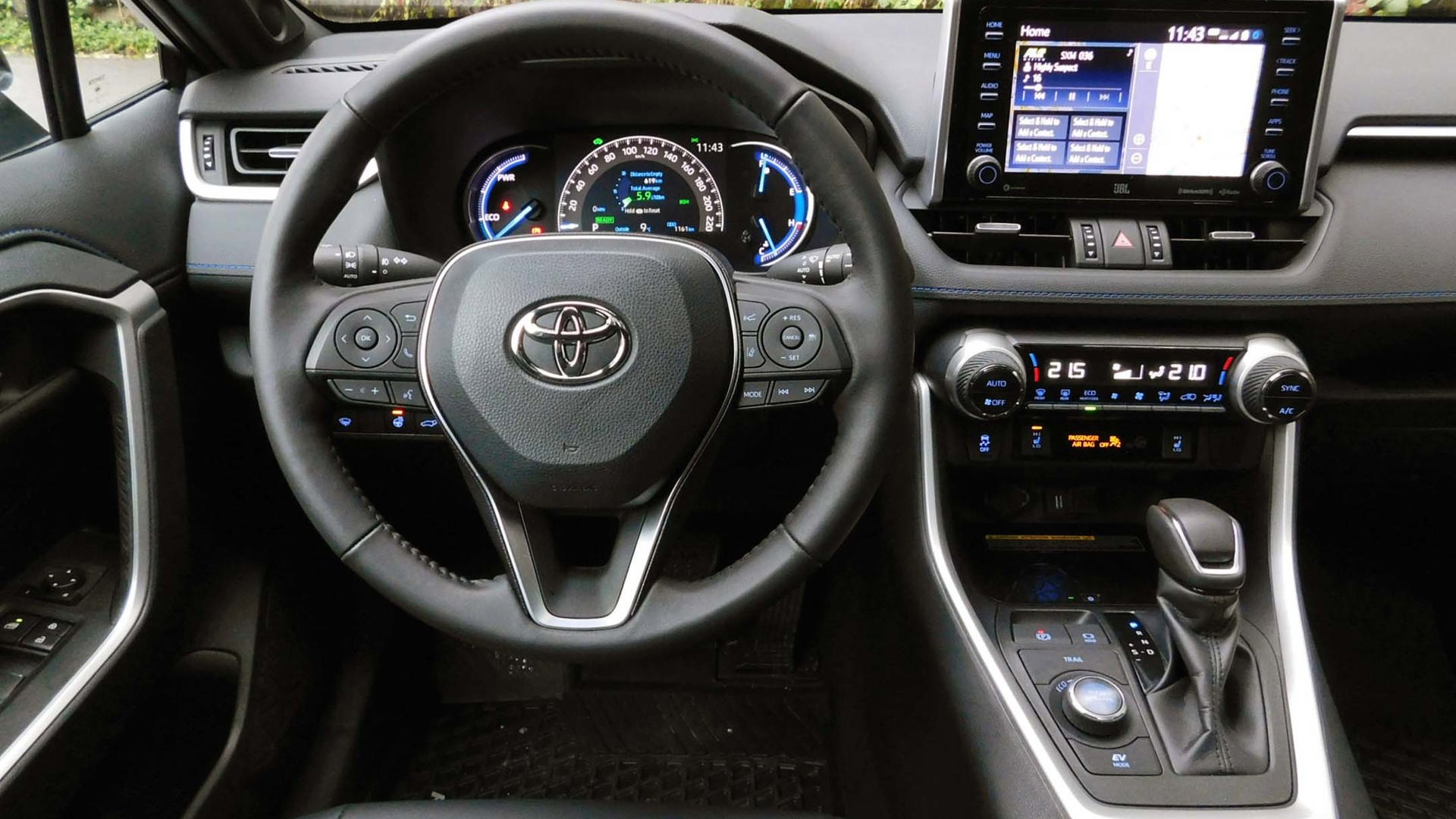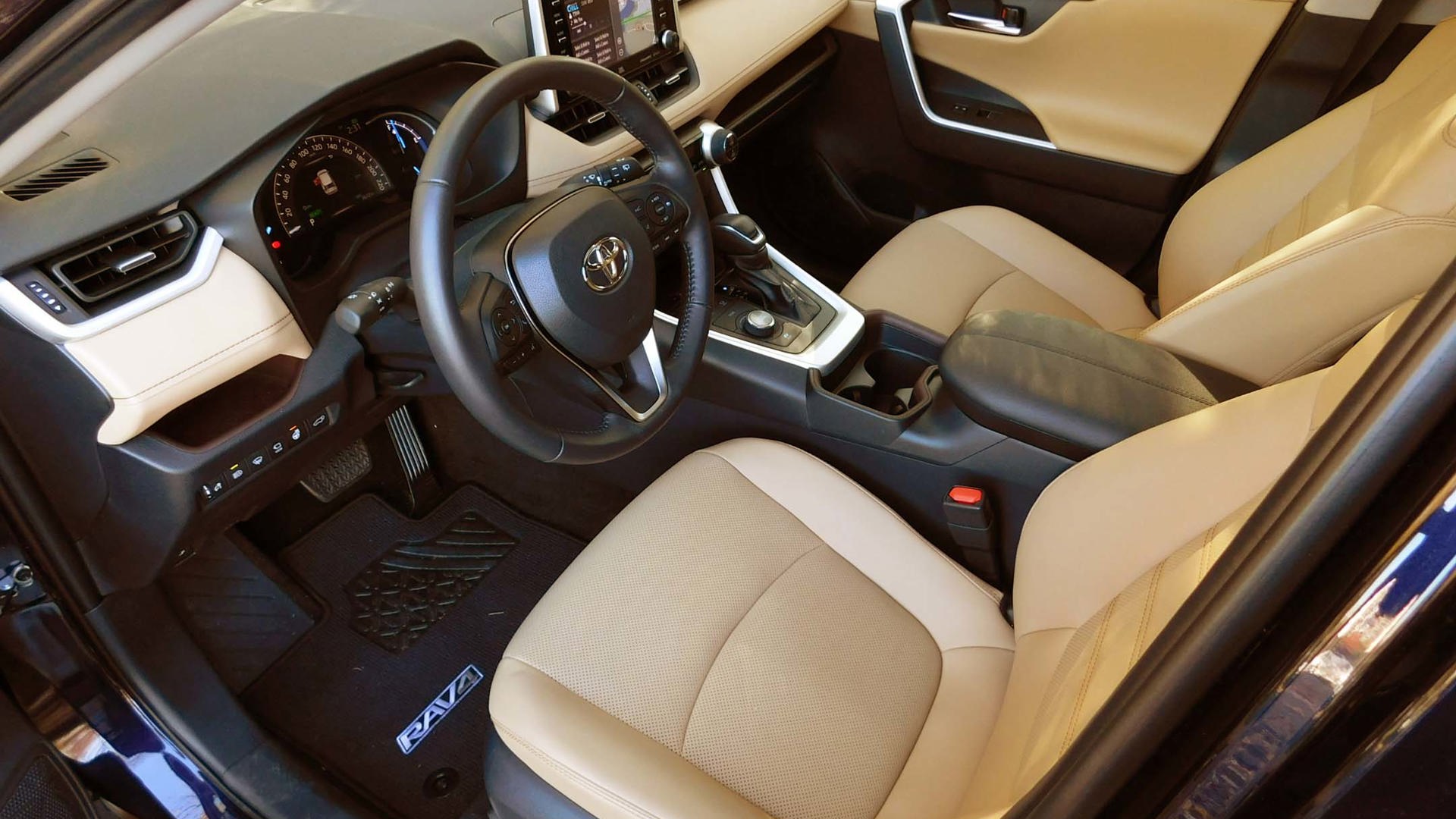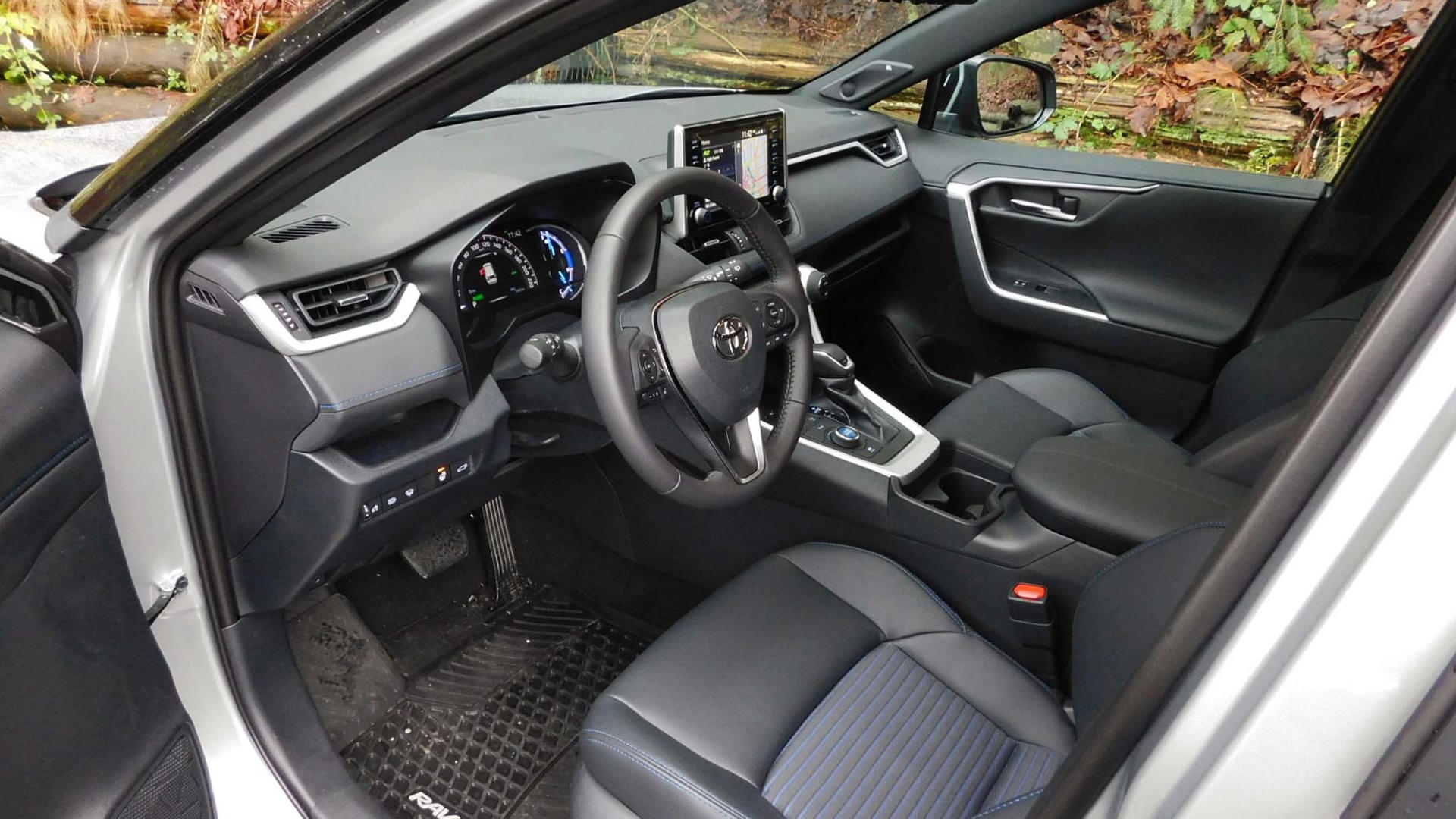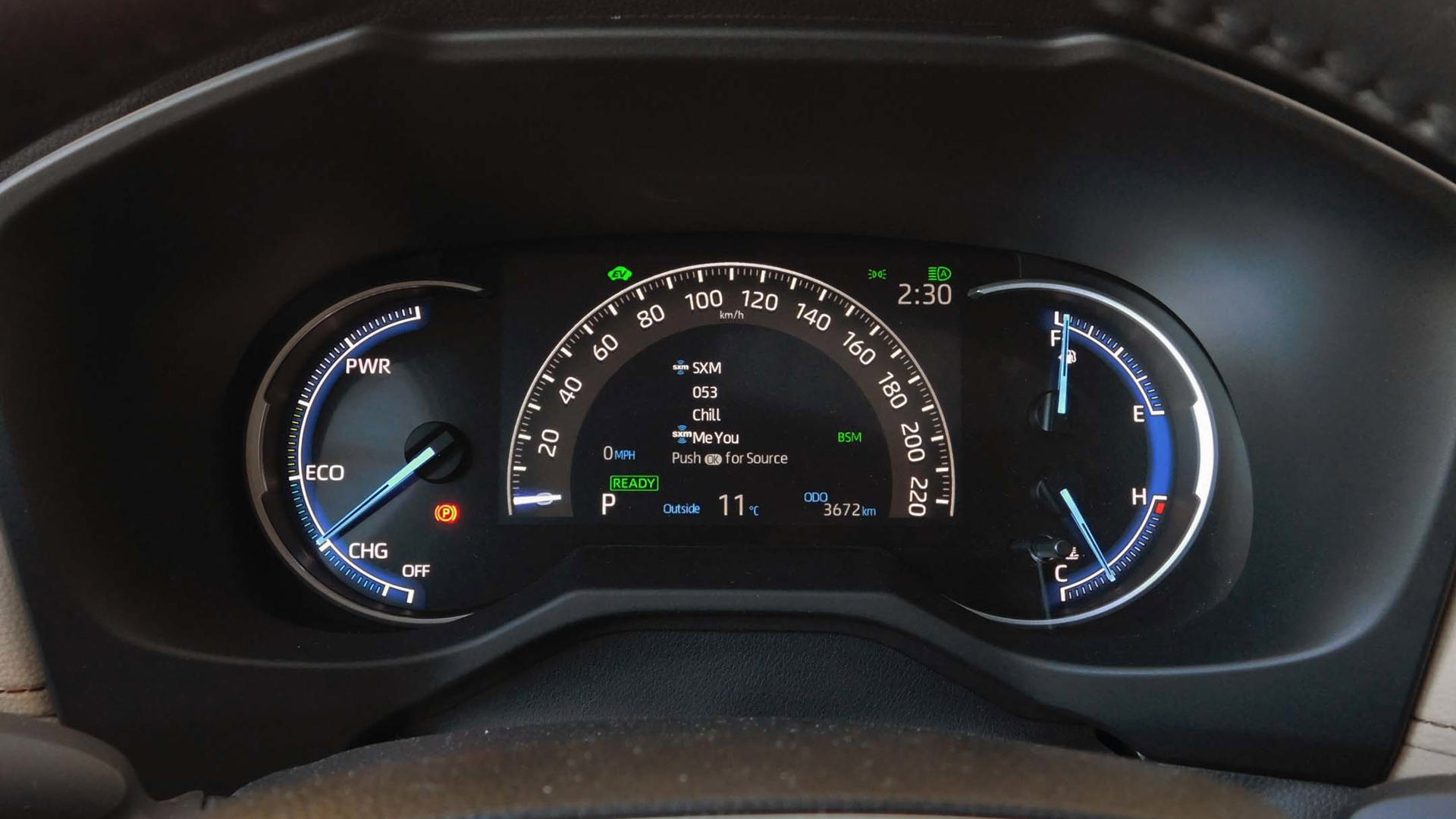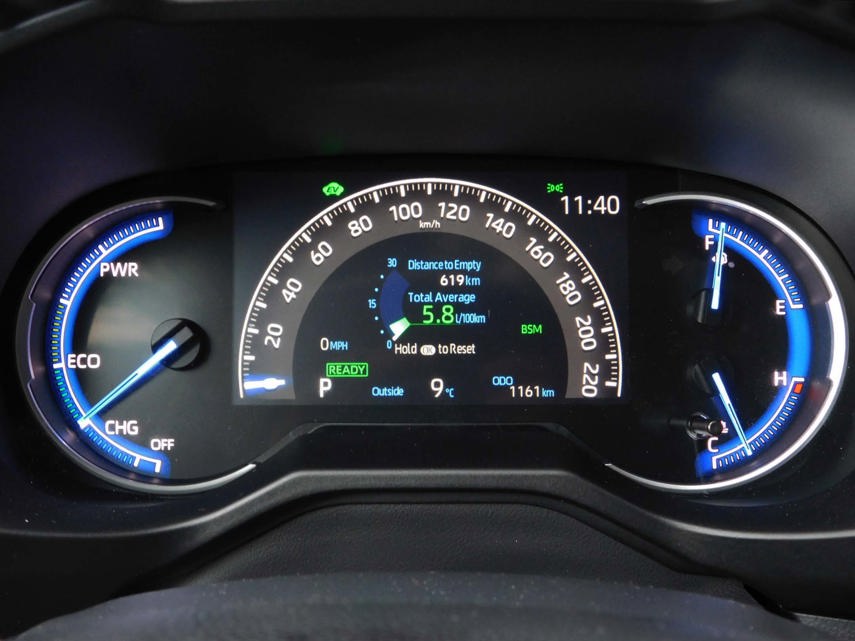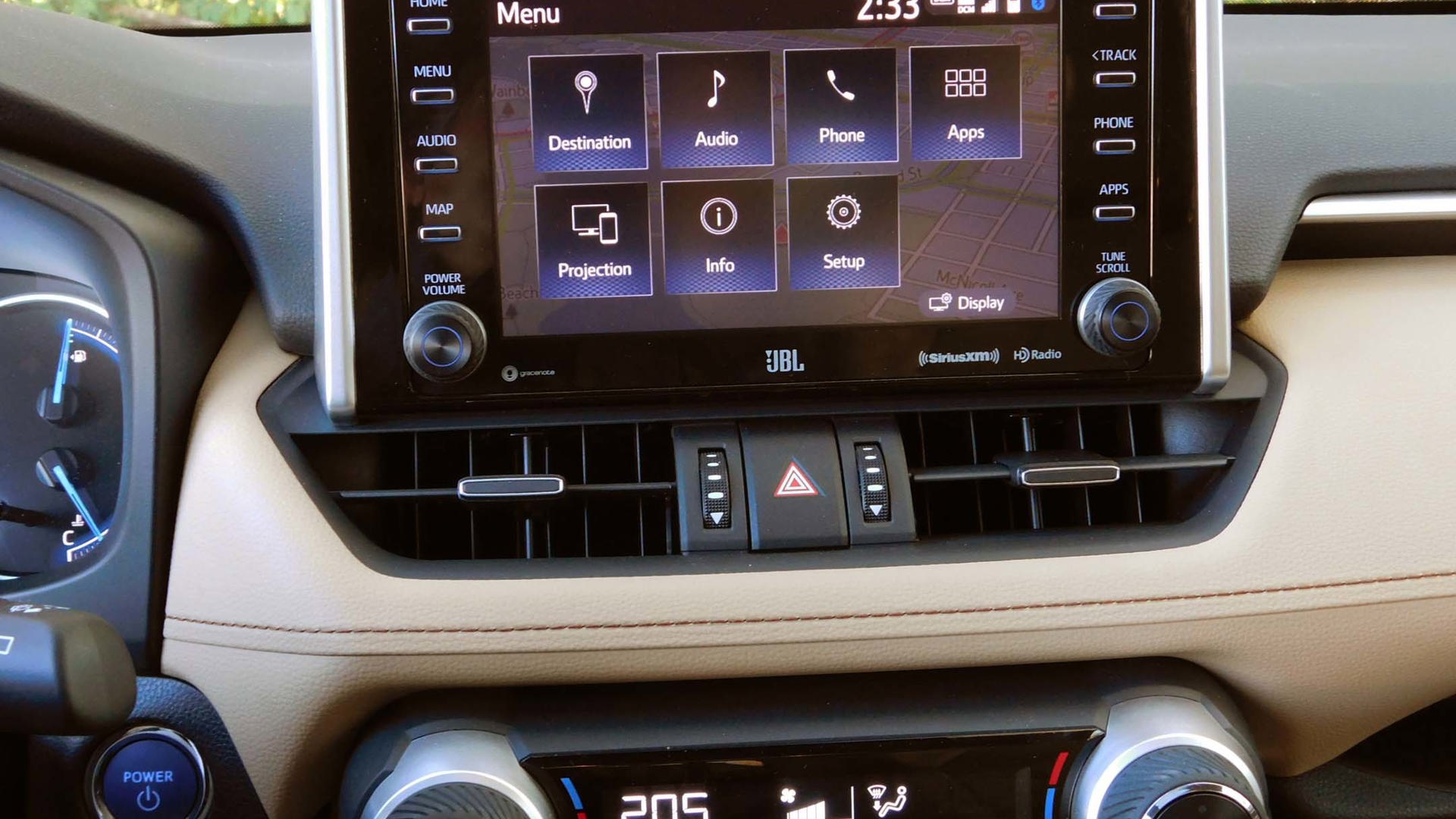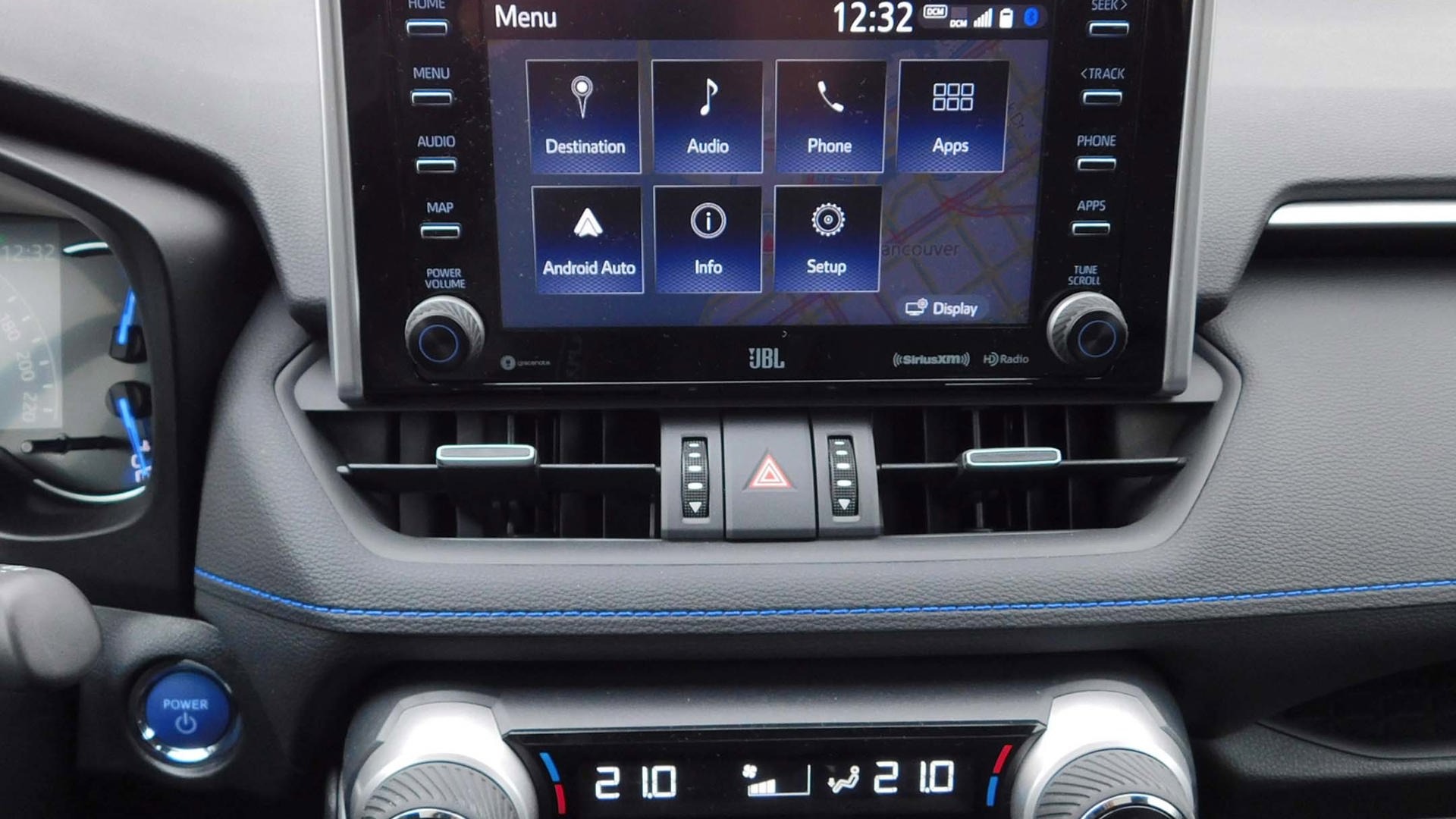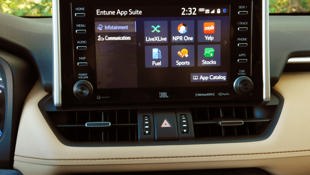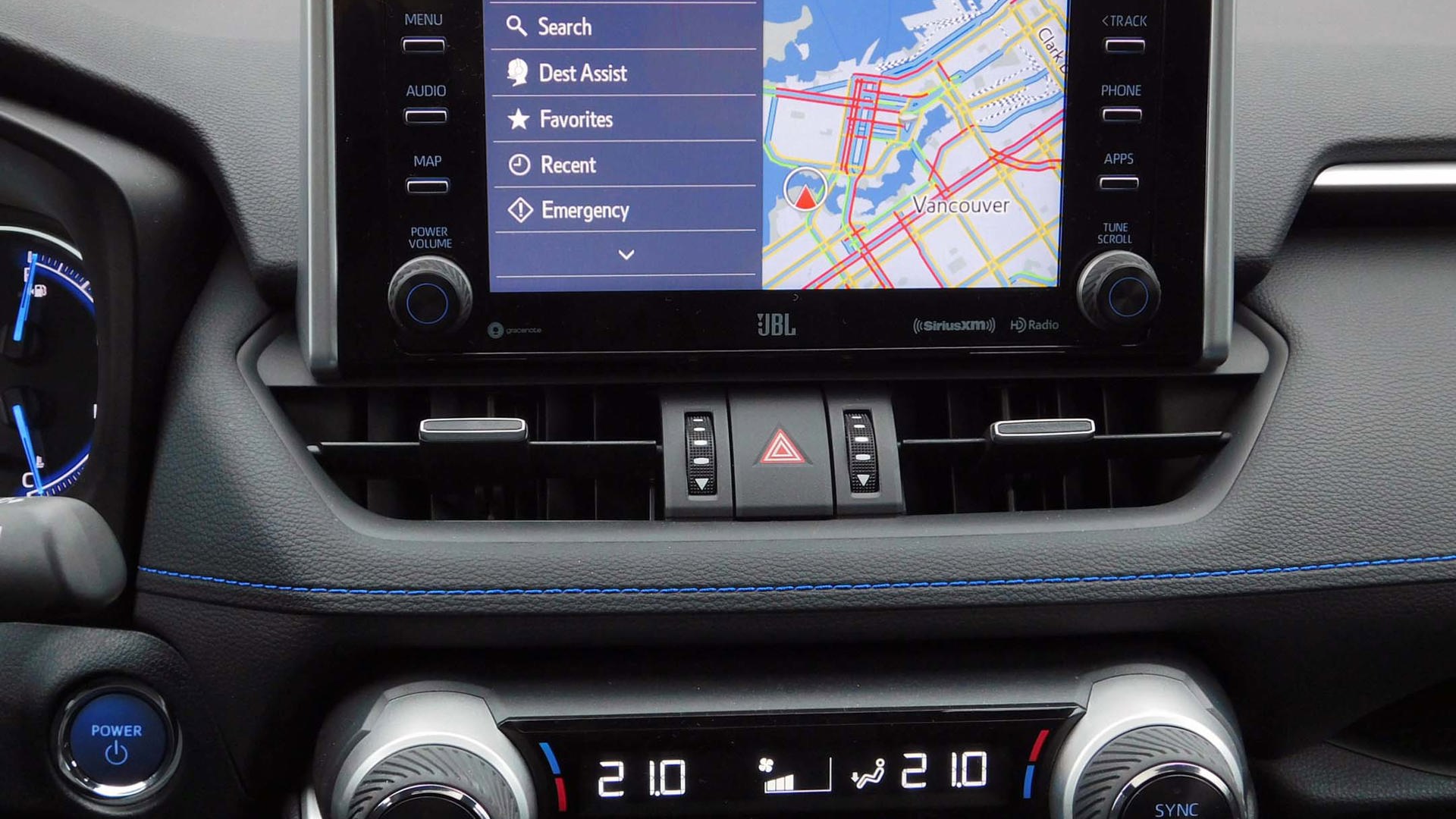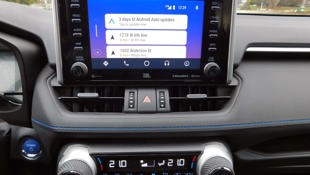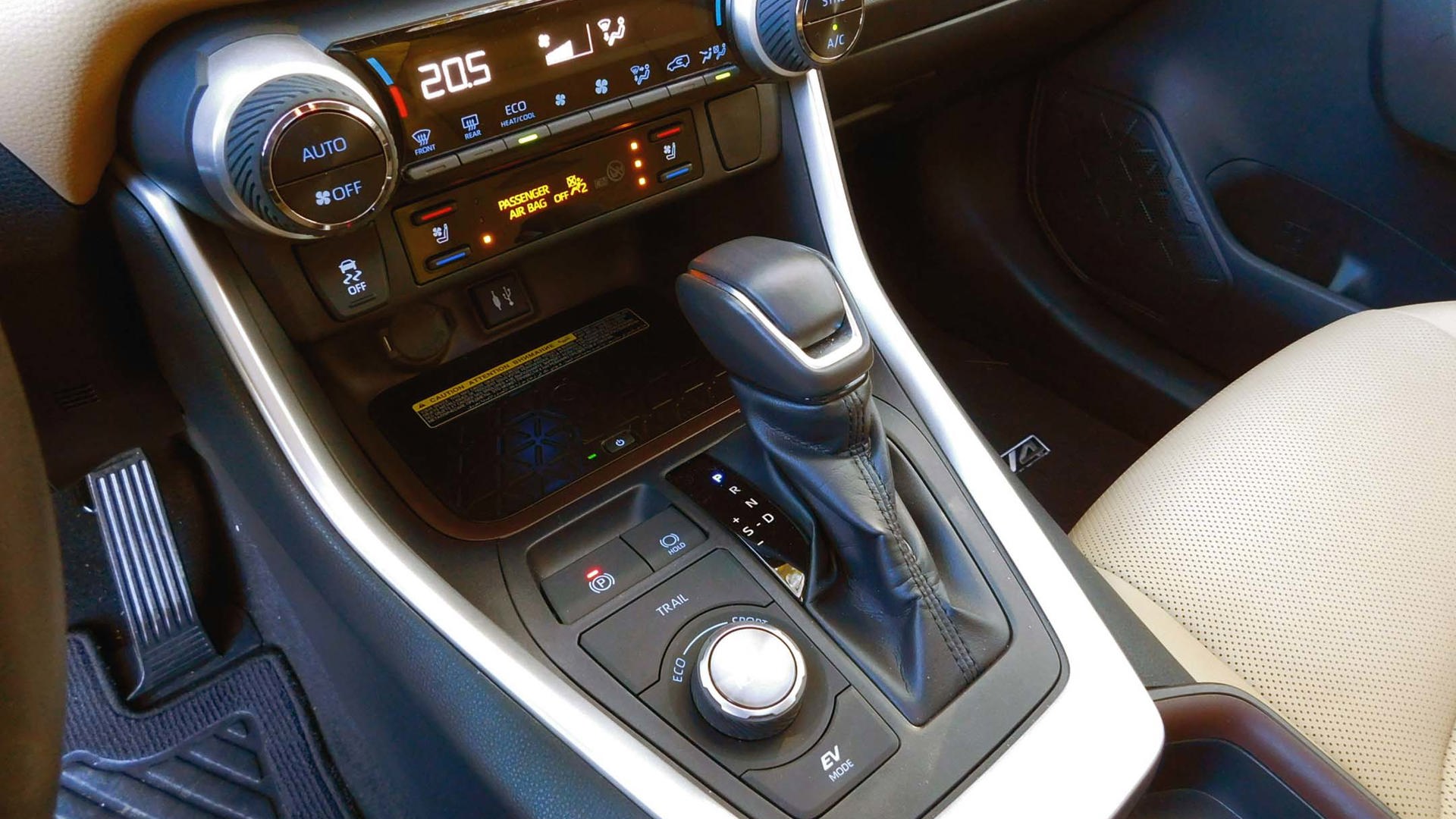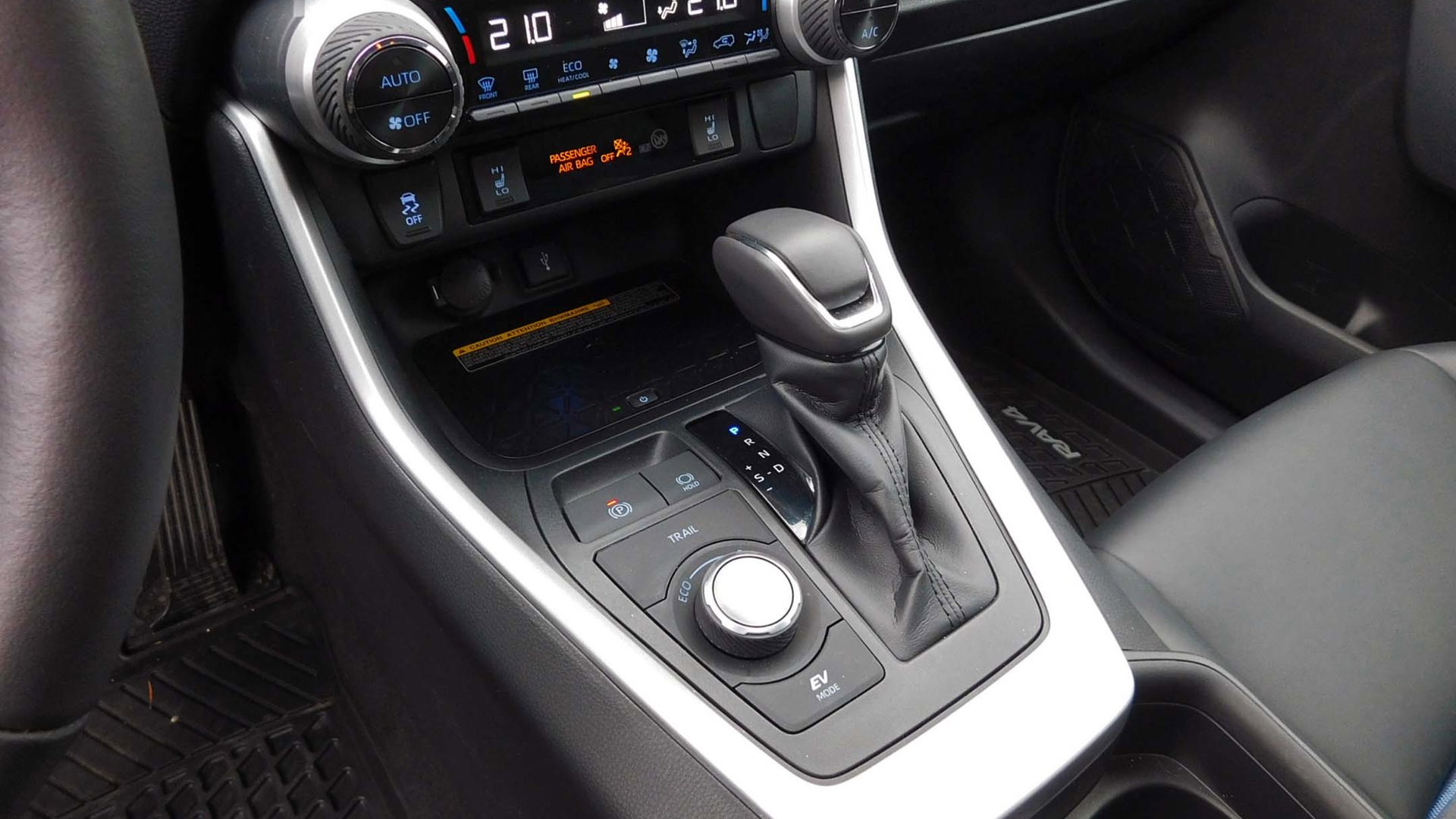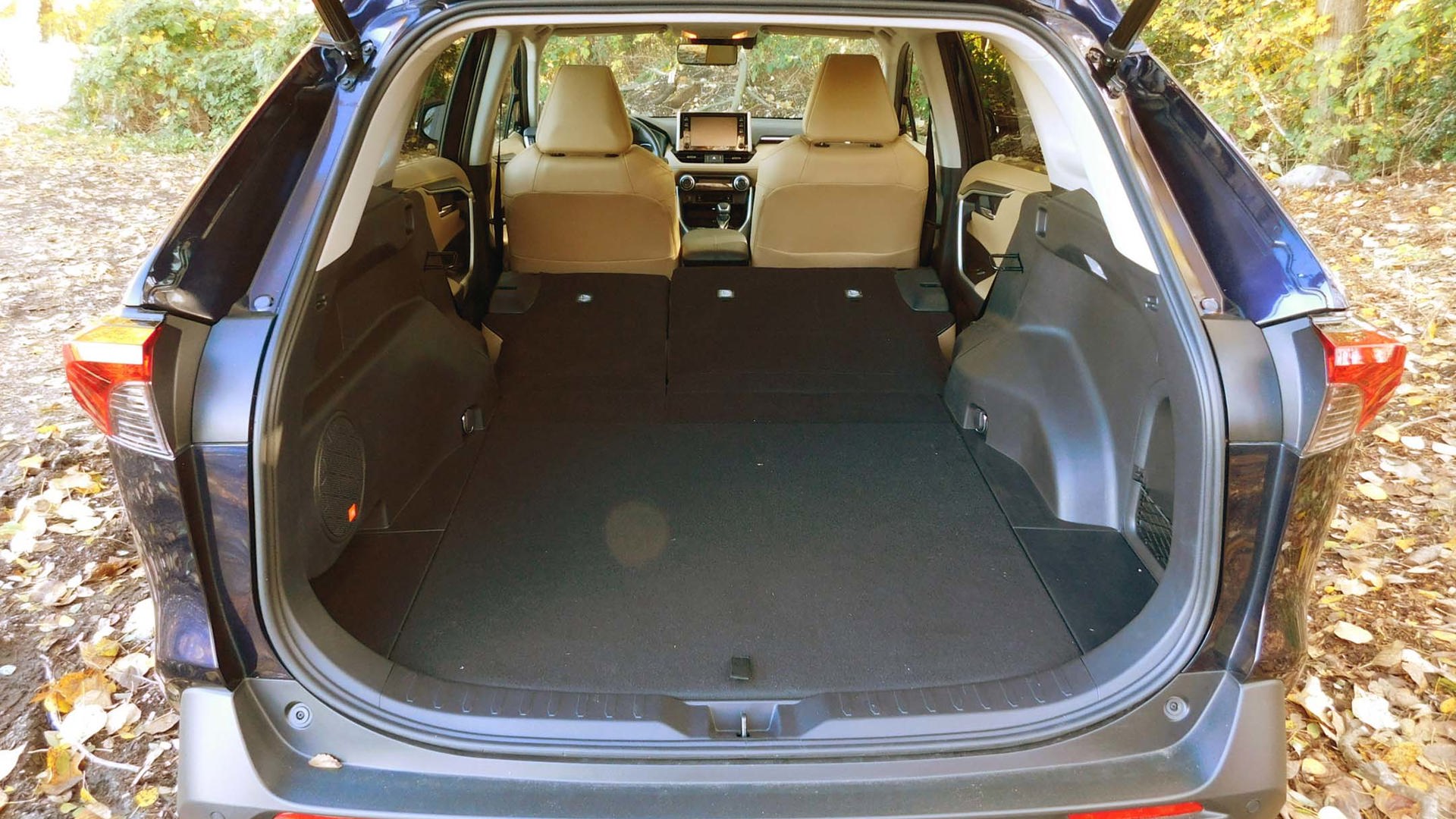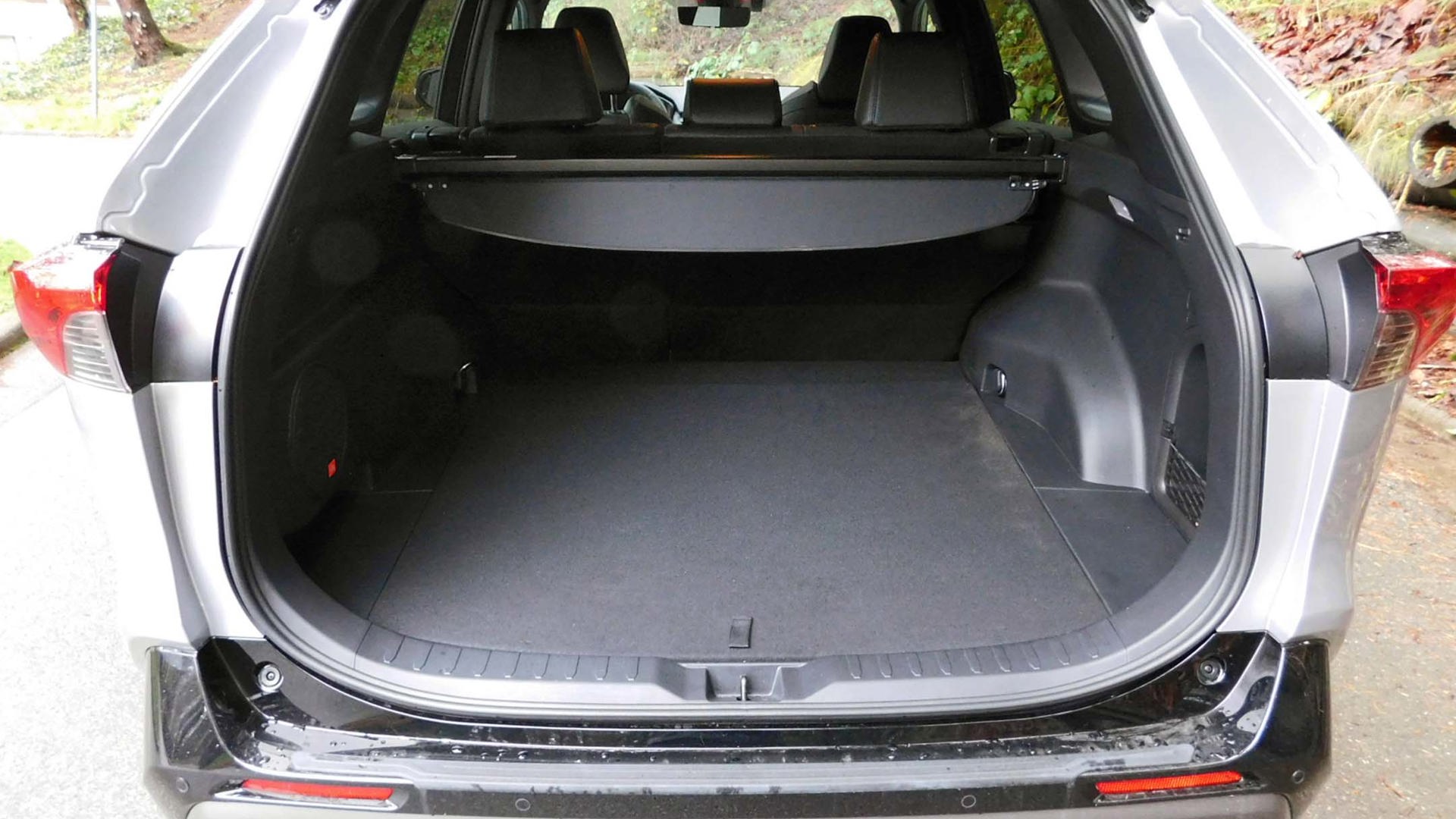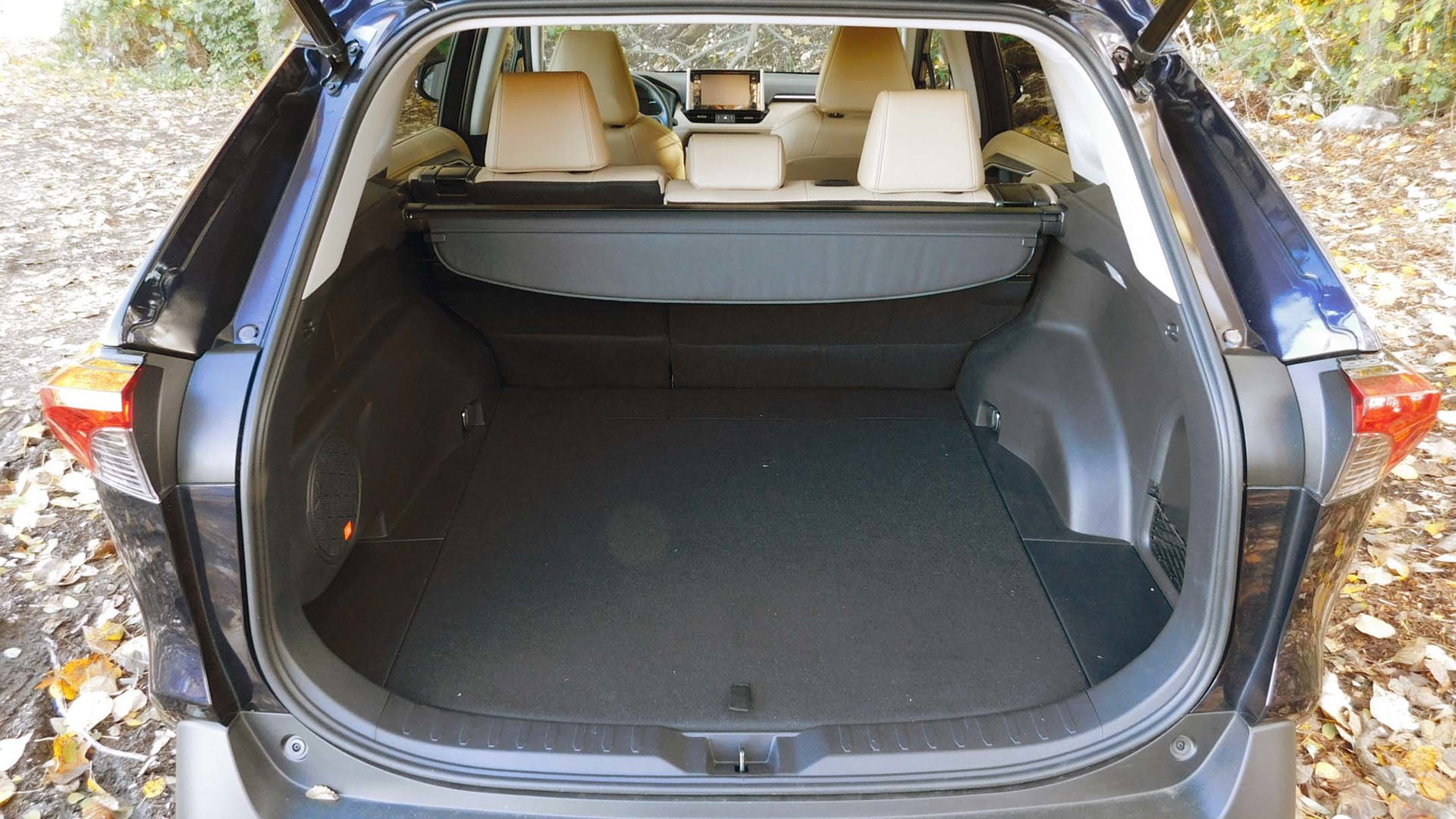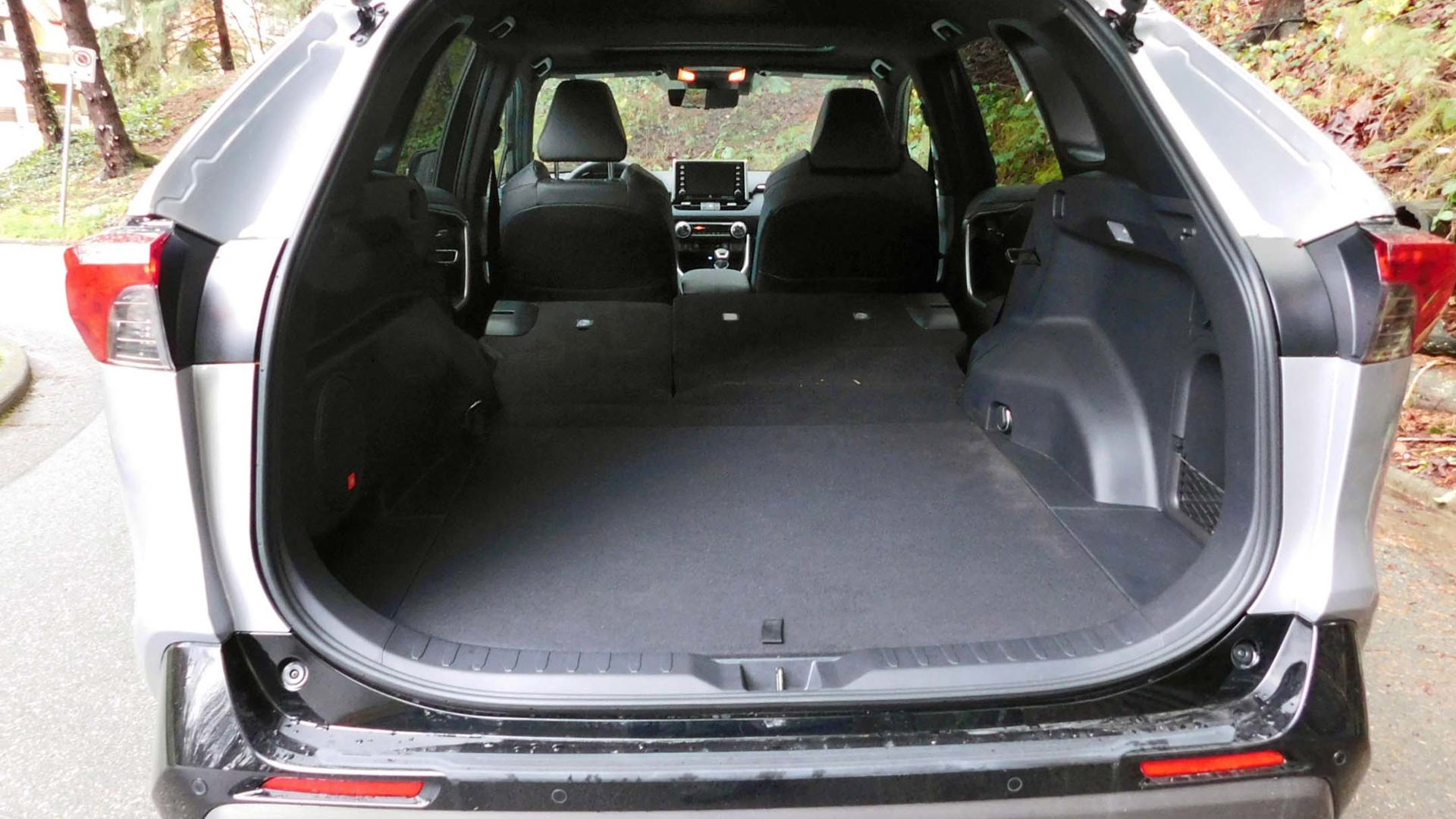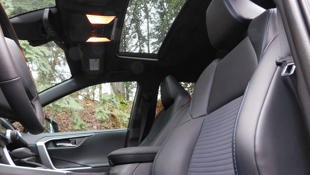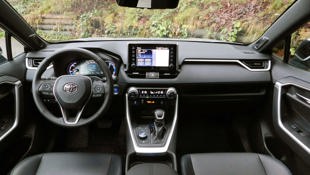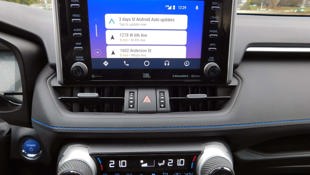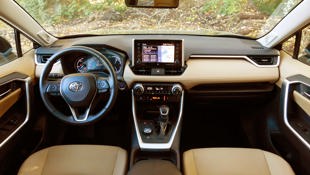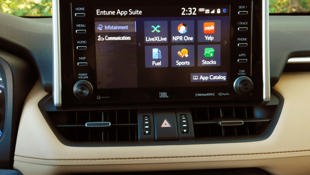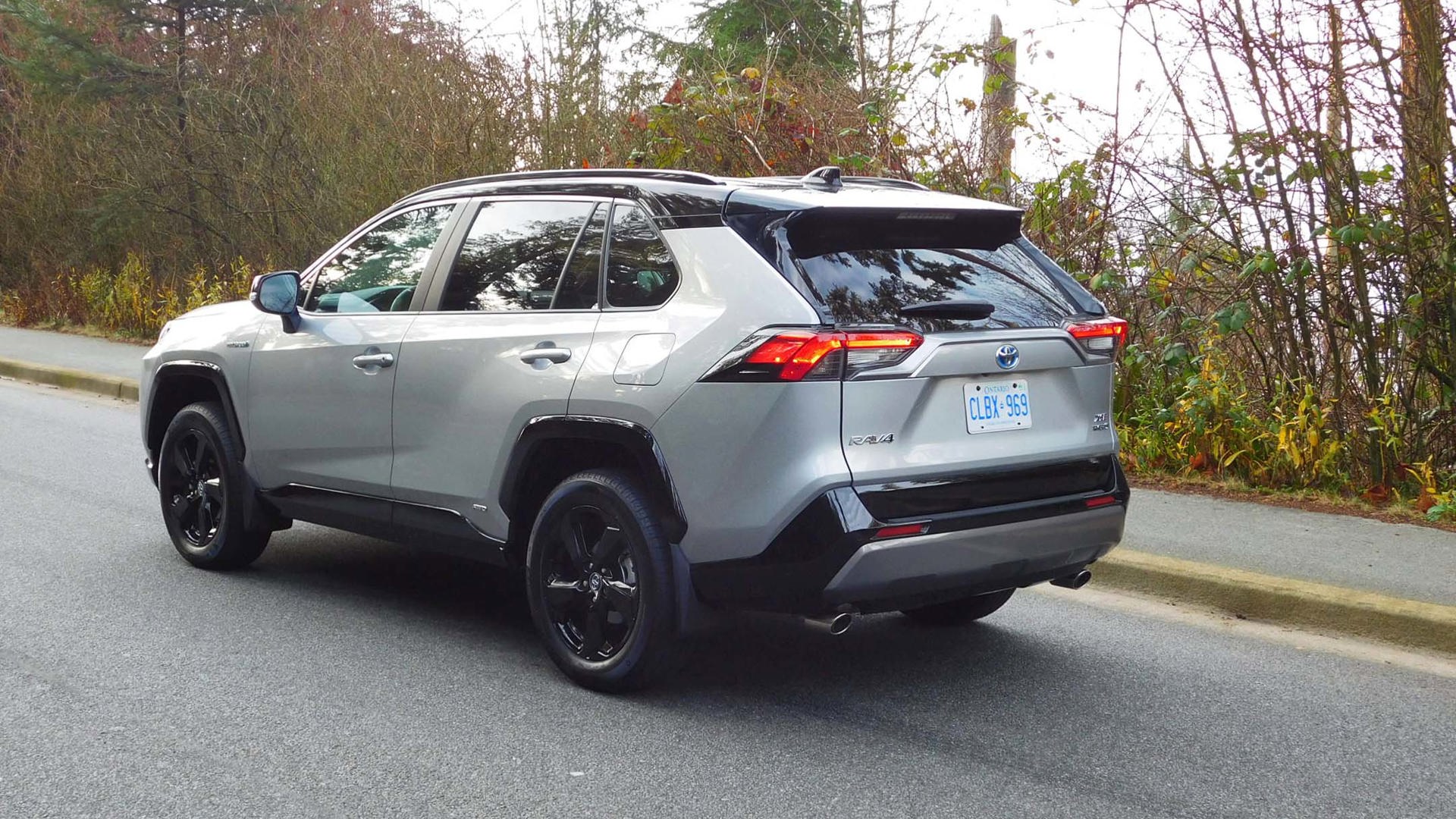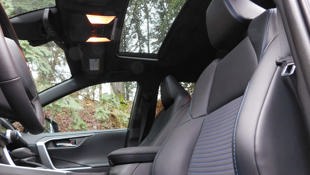Comparison Data
|
2019 Toyota RAV4 Hybrid Limited
|
2020 Toyota RAV4 Hybrid XLE
|
|---|---|
|
Engine Displacement
2.5L
|
2.5L
|
|
Engine Cylinders
I4 with hybrid electric
|
I4 with hybrid electric
|
|
Peak Horsepower
219 hp combined
|
219 hp combined
|
|
Peak Torque
N/A
|
N/A
|
|
Fuel Economy
5.8/6.3/6.0 L/100 km cty/hwy/cmb
|
5.7/6.3/6.0 L/100 km cty/hwy/cmb
|
|
Cargo Space
1,059 / 1,977 L seats down
|
1,059 / 1,977 L seats down
|
|
Base Price
$42,090
|
$35,350
|
|
A/C Tax
$100
|
$100
|
|
Destination Fee
$1,815
|
$1,815
|
|
Price as Tested
$44,005
|
$43,485
|
|
Optional Equipment
None
|
$6,220 – XSE Technology Package, $6,220
|
Toyota introduced an all-new fifth-generation RAV4 for the 2019 model year, with a crisp-handling new chassis architecture and rugged-looking styling that borrows heavily from Toyota’s truck lineup.
It’s a marked departure from the mall-friendly looks of the previous-generation RAV4, and should help Toyota’s already popular compact crossover appeal to a wider cross-section of buyers.
What’s changed?
For 2020, a new TRD Off-Road trim level will make the conventionally powered RAV4 even more appealing to potential truck buyers.
The RAV4 Hybrid doesn’t get any similar major changes for 2020, but it does get one significant addition in the form of Android Auto compatibility. This has been a long time coming for Toyota fans, and means the RAV4 now boasts all the most popular smartphone connectivity options, with Android Auto, Apple CarPlay, Amazon Alexa, and Toyota’s own Entune 3.0 system.
In other respects it carries over essentially unchanged.
Power and efficiency
Power for the RAV4 Hybrid is from a 2.5L four-cylinder engine combined with a pair of electric motors, for a total of 219 hp directed to all four wheels as needed (the front wheels are driven by the gas motor paired with a 118 hp electric motor, while the rear wheels are driven by a 54 hp electric motor).
The conventionally powered RAV4 only makes 203 hp, so the Hybrid is actually the quicker of the two (it’ll go from zero to 100 km/h in a hair under 8 seconds, versus 8.5 seconds for its conventional sibling). As a bonus, because its internal combustion engine doesn’t have to work as hard under most circumstances, the Hybrid also quieter than the conventionally powered RAV4 (one of the few complaints against the latest-generation RAV4 is its somewhat noisy engine).
Given its performance advantage, the RAV4 Hybrid’s fuel economy is even more impressive: Where the conventionally powered RAV4 AWD is rated at 9.2 / 7.1 L/100 km city / highway, the AWD 2020 RAV4 Hybrid is rated at 5.7 / 6.3 L/100 km. During roughly 350 km of driving I pretty much flipped these numbers, getting 5.6 L/100km on the highway and 6.7 L/100km in the city. Over the course of several thousand kilometres, the 2019 Limited model I drove showed a long-term mixed average of 6.1 L/100 km – almost spot on the official 6.0 L/100 km combined rating. These are outstanding numbers that put the RAV4 Hybrid in a league of its own, at least prior to the arrival of the 2020 Ford Escape Hybrid and 2020 Honda CR-V Hybrid.
Roomy and practical
The fifth-generation RAV4 has a slightly longer wheelbase than the previous generation, but it’s a touch shorter overall, giving it noticeably shorter overhangs. Combined with an extra inch of ground clearance, this means the 2019 and 2020 RAV4 have newfound capability on cottage trials and in other off-road situations. On-road handling is also improved thanks to the longer wheelbase and a lower overall centre of gravity, which was accomplished by lowering the mounting points for the engine and transmission.
Interior dimensions are virtually unchanged compared to the fourth-generation model – there’s a little more rear legroom and shoulder room, but a touch less front and rear headroom, and marginally less cargo space. Still, the new RAV4 is a roomy vehicle. With the driver’s seat set properly for my 5'11" frame, my 6'3" son fit comfortably behind me when we picked him up at the airport, and the RAV4’s cargo area easily swallowed his huge checked airline suitcase, carry-on, and electric guitar.
The RAV4 Hybrid’s practicality extends to a impressive suite of standard active safety technology across all grades, including lane-tracing assist, automatic high -eams, dynamic radar cruise control, pre-collision system with pedestrian/ bicycle detection, and lane-departure alert with steering assist.
Which should you buy?
The 2019 RAV4 Hybrid was better in almost every way than the previous-generation model, providing improved performance and economy compared to the conventionally powered RAV4 for less than $2,000 extra upfront. It certainly hit the sweet spot with buyers, who snatched up most of the available stock as fast as dealers could bring them in. This means there are precious few 2019 RAV4 Hybrids left on dealers’ lots at the year-end.
In mid-December, a central BC dealer with a matched pair of 2019 and 2020 RAV4 Hybrid LE’s in stock – both in Ruby Flare Pearl red with black interior – had the 2019 listed at $32,745, versus $33,005 for the 2020. A couple of different Ontario-based dealers each had a Super White 2019 RAV4 Hybrid LE in stock, both priced at $32,090 before freight, versus $32,350 MSRP for a 2020 model on Toyota’s website. (Conventionally powered RAV4s are more readily available, with Toyota’s website still offering build and price information for 2019 models in mid-December.)
Purchasing a 2020 RAV4 Hybrid means you can get the exact trim and colour you want, and even if you don’t care about Android Auto it’s a desirable feature that’ll help the vehicle retain its value come trade-in time. Given the meagre selection of remaining 2019s and the limited savings on offer, unless you can find a particularly good deal on a 2019 (or unless you want to wait until 2021 when the 302 hp RAV4 Prime plug-in hybrid is set to arrive) the best choice in this case may be to pony up the extra few hundred dollars and get a 2020 model.
